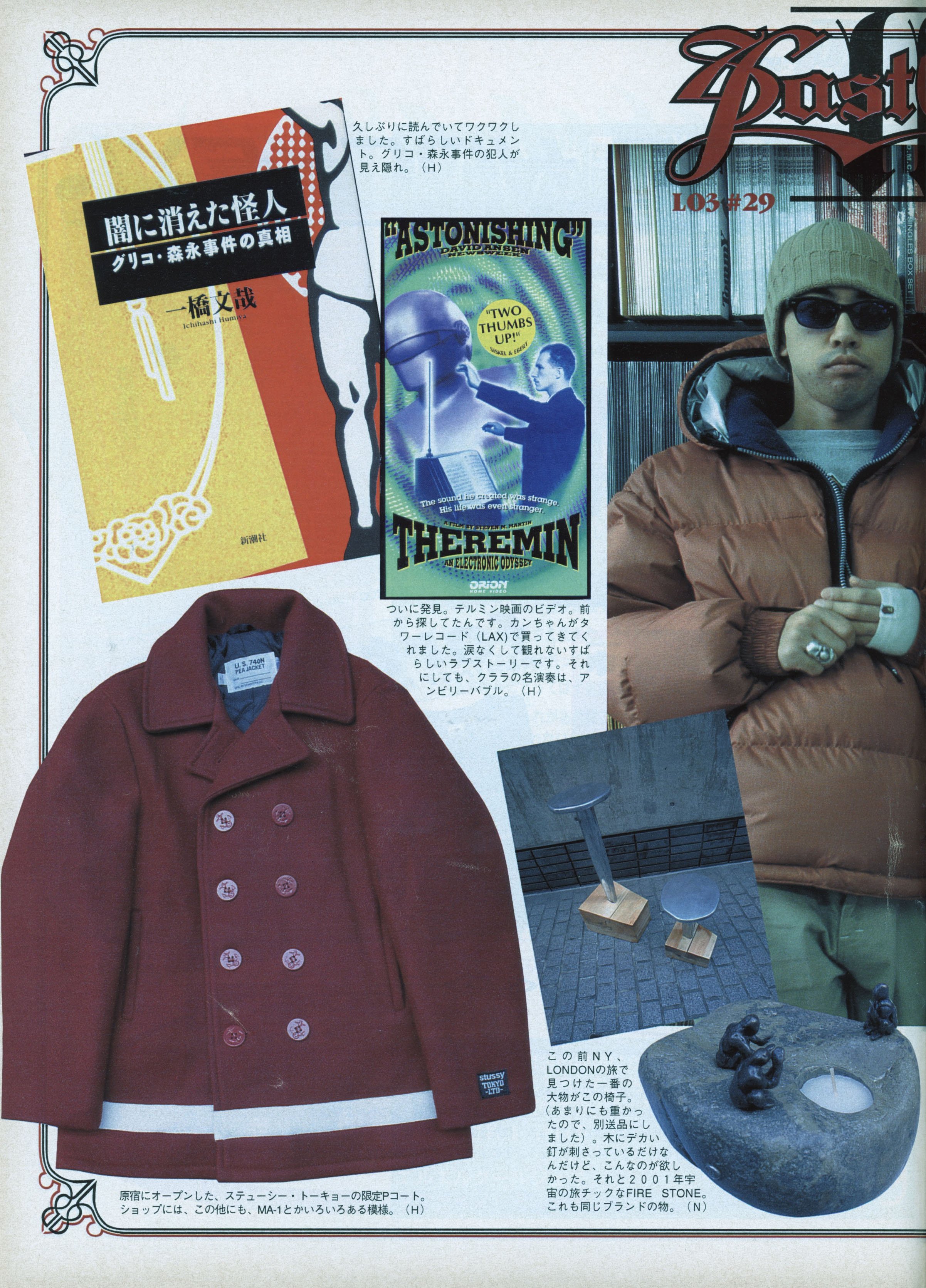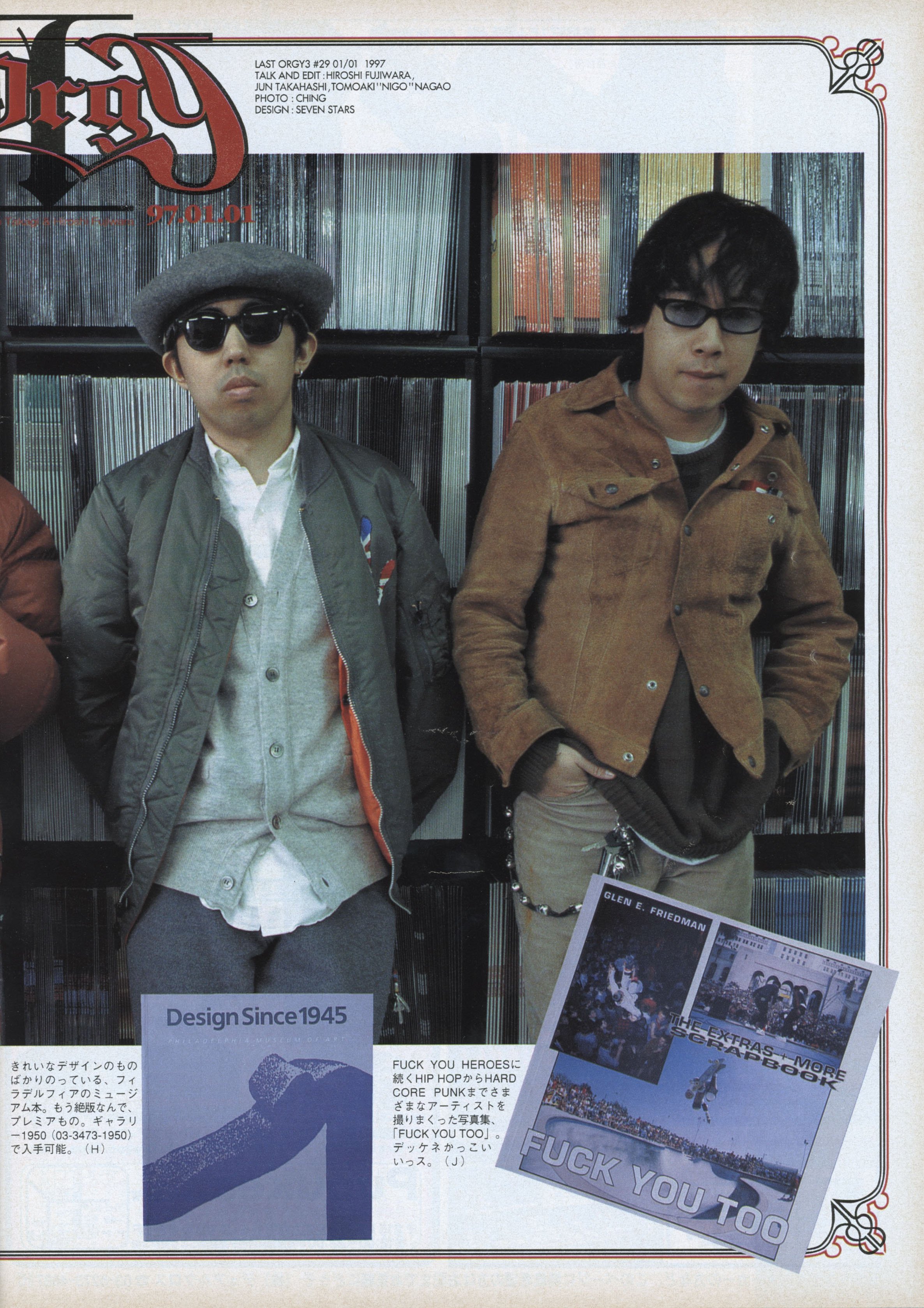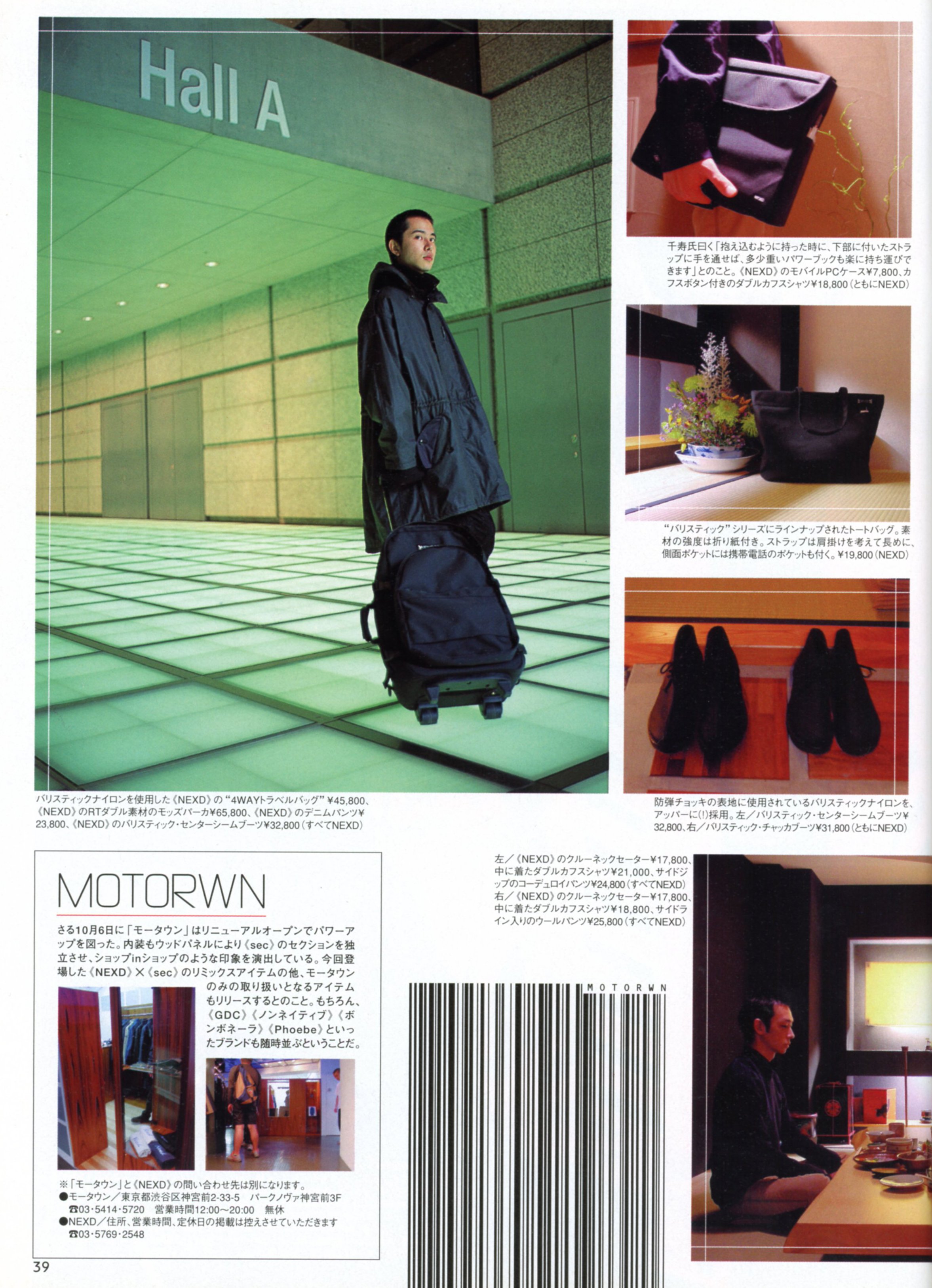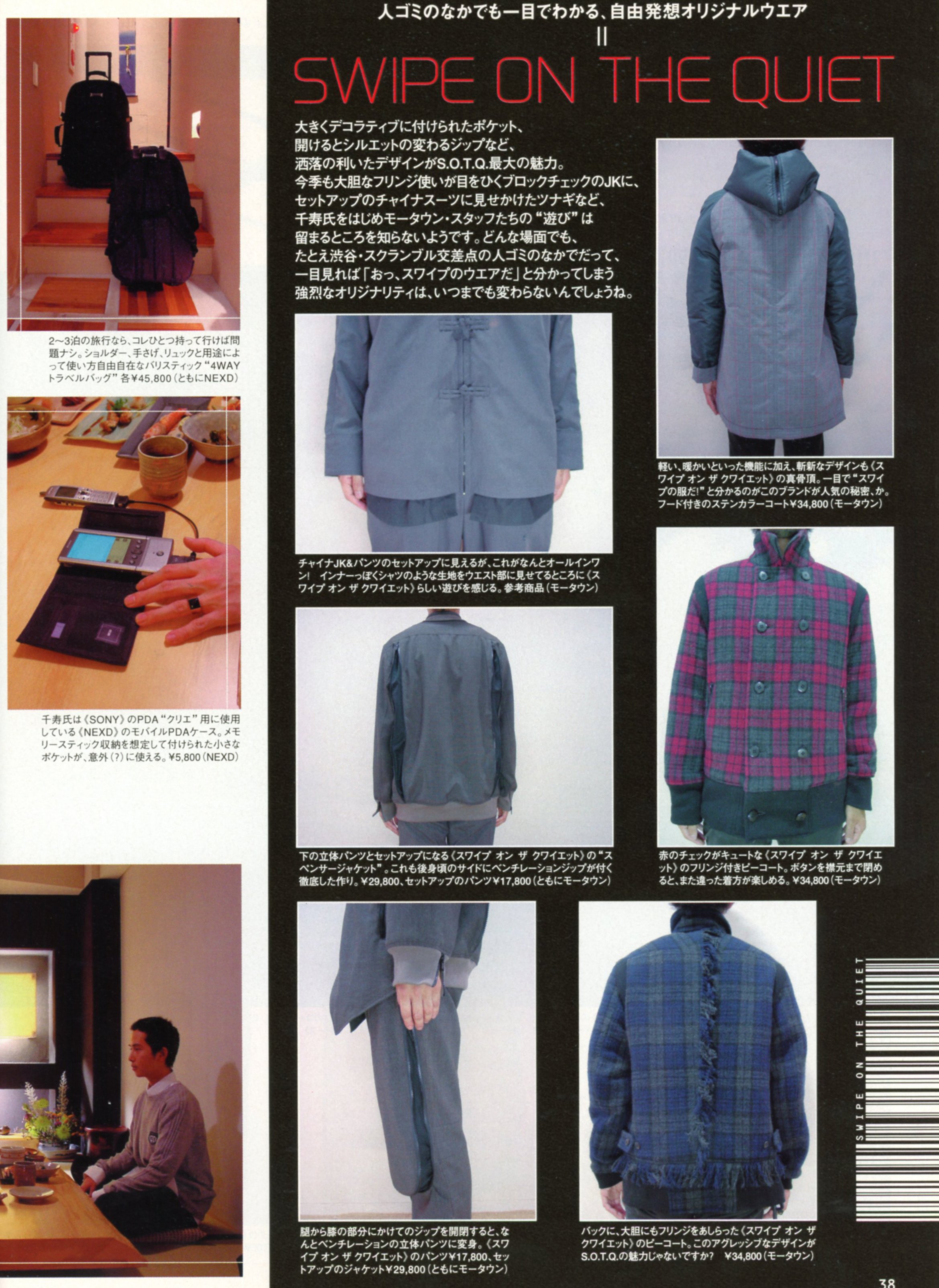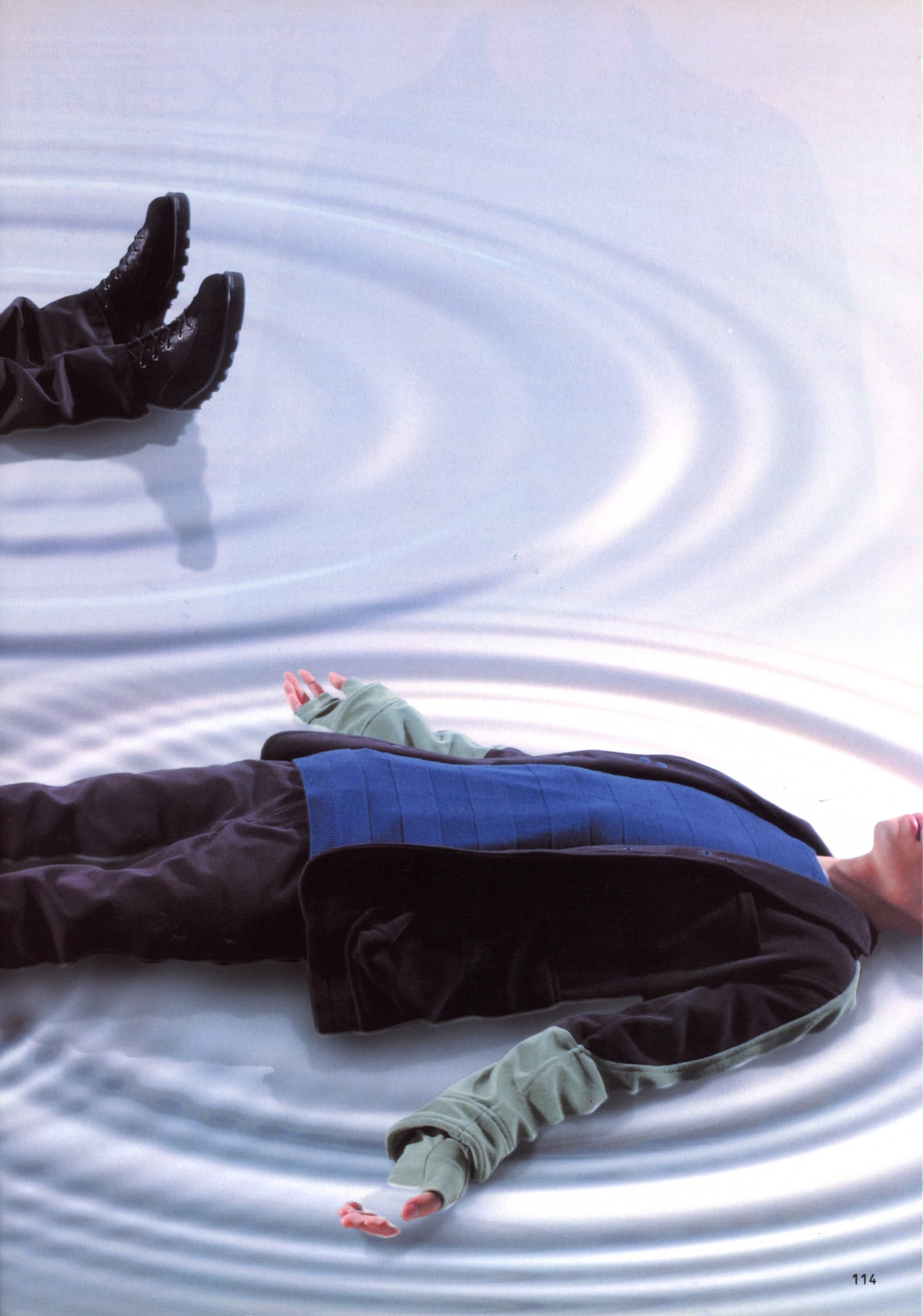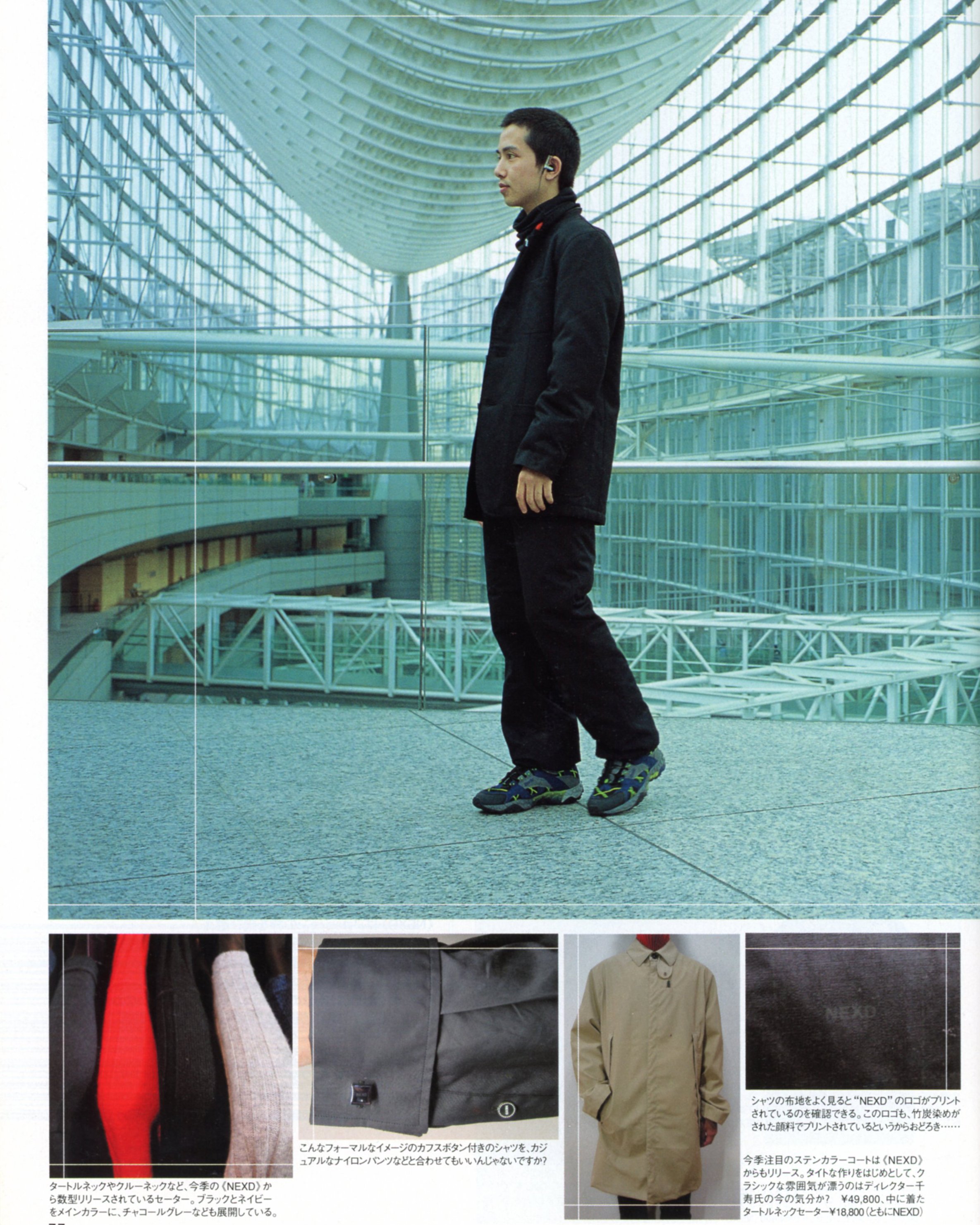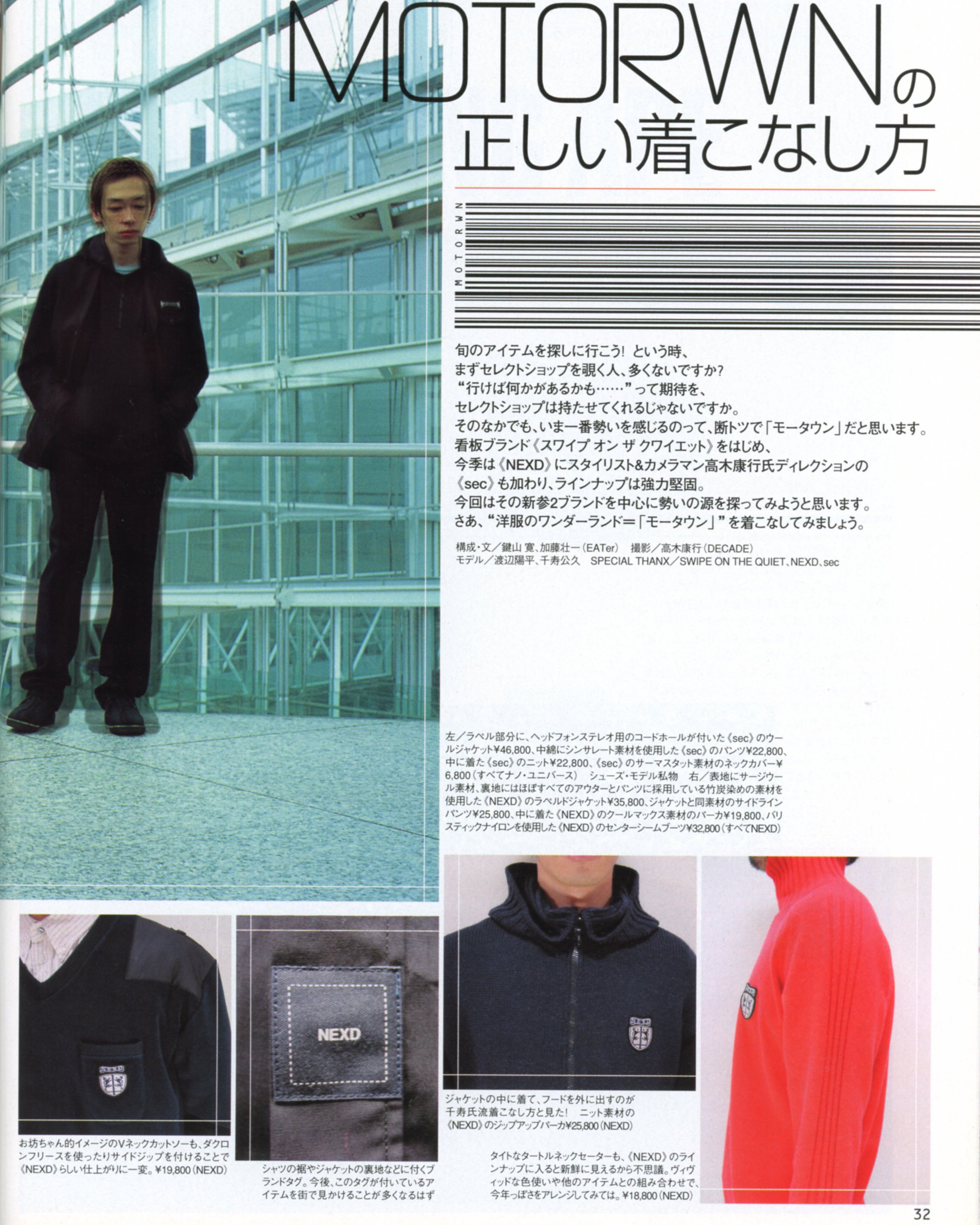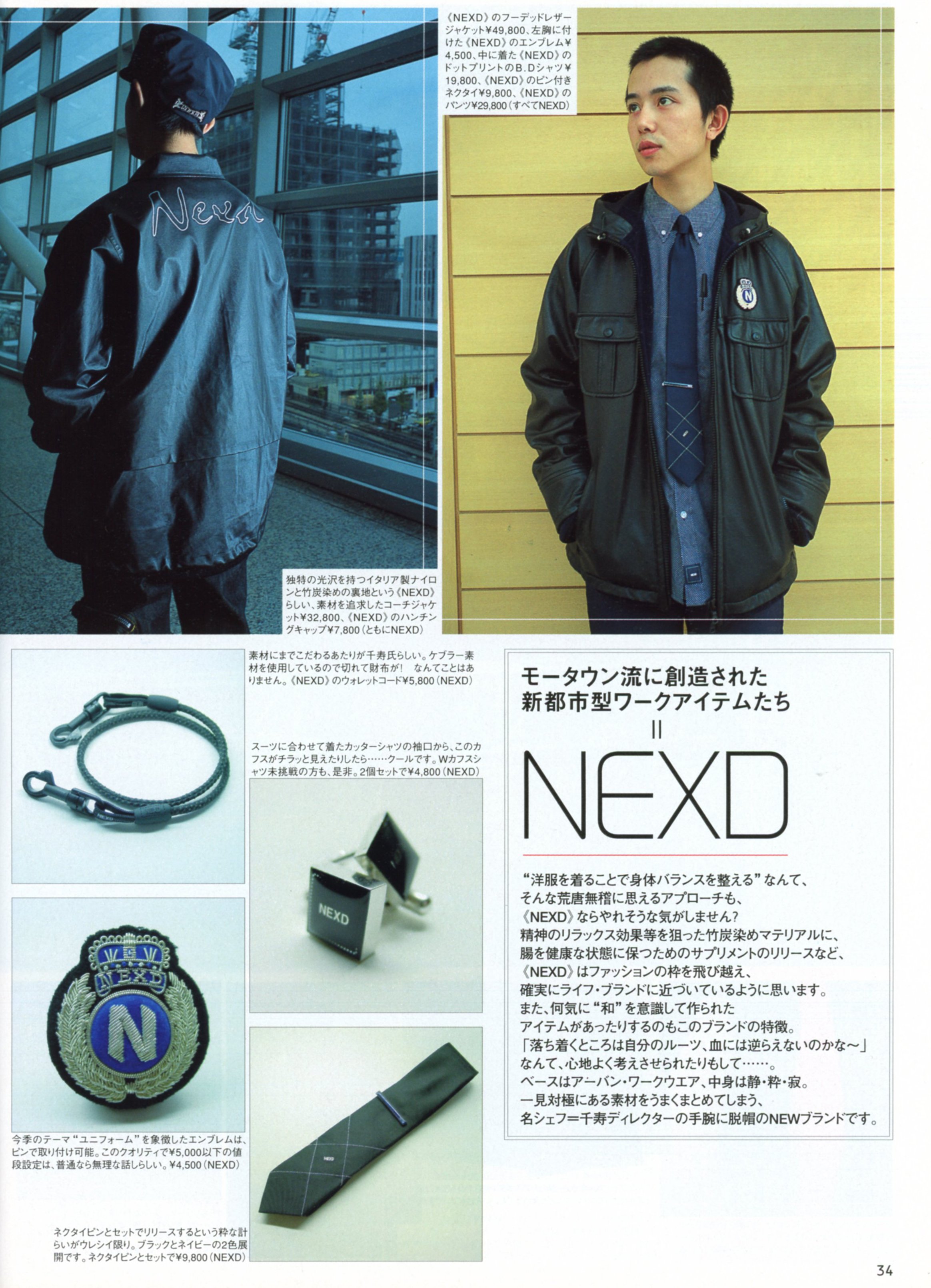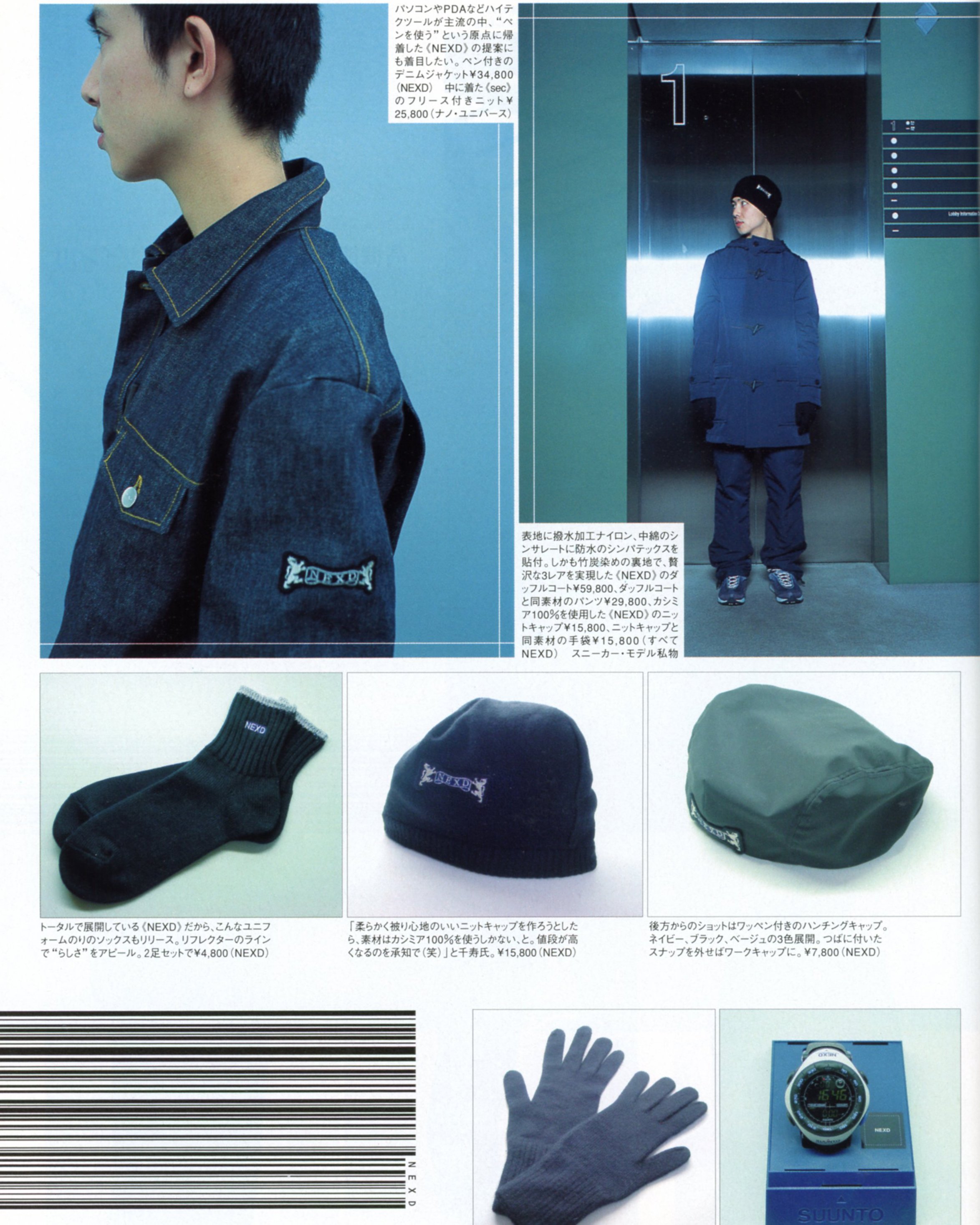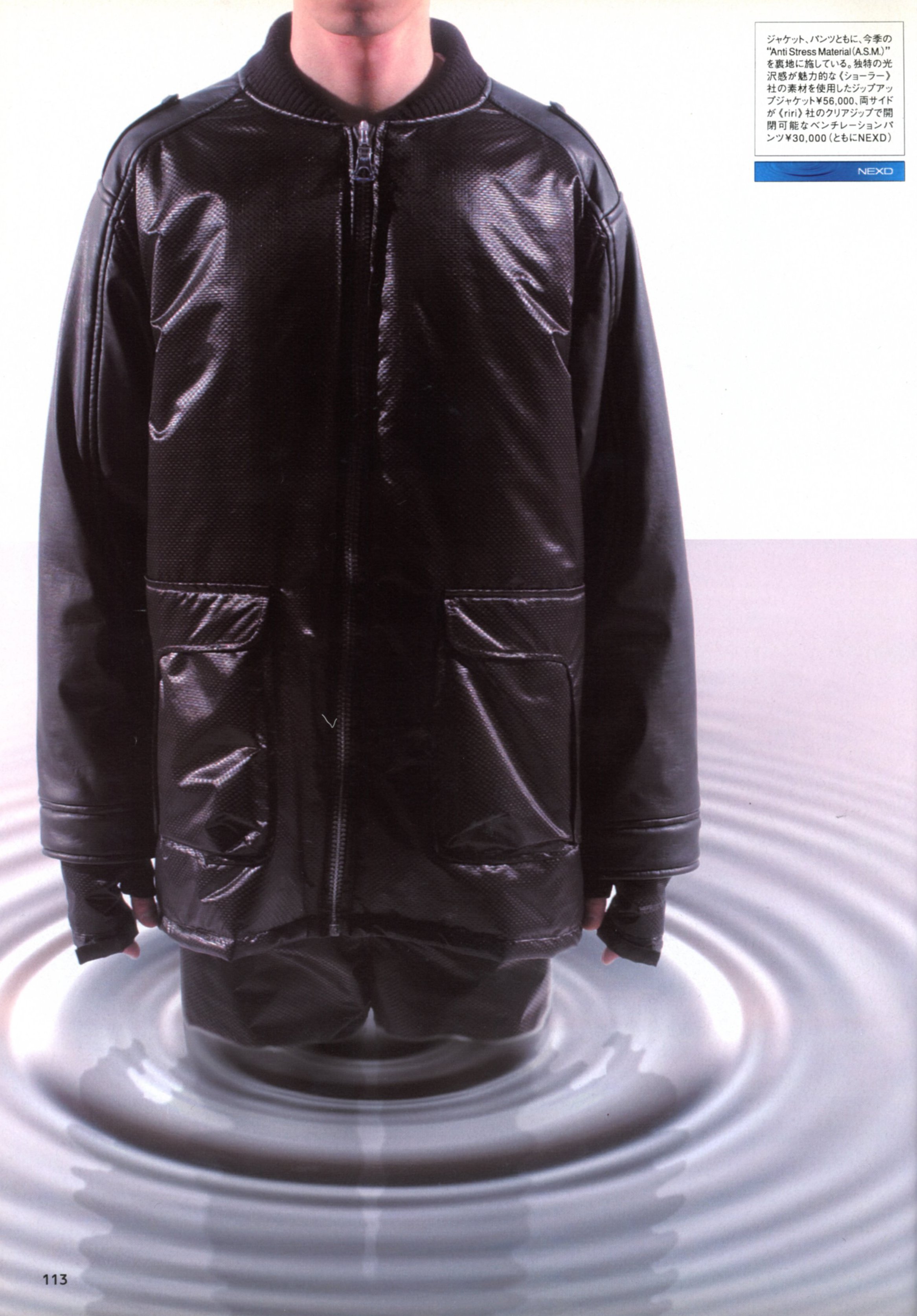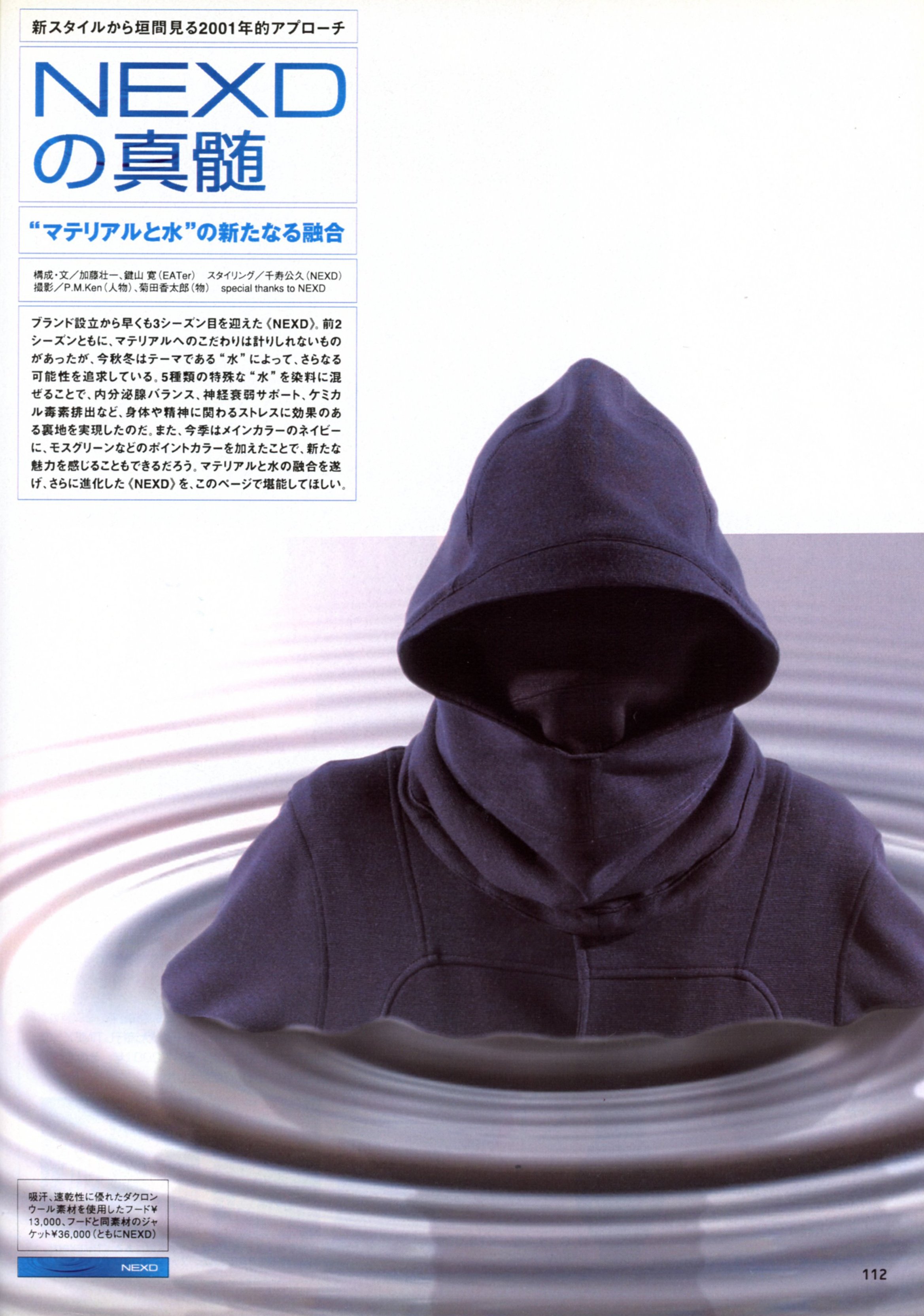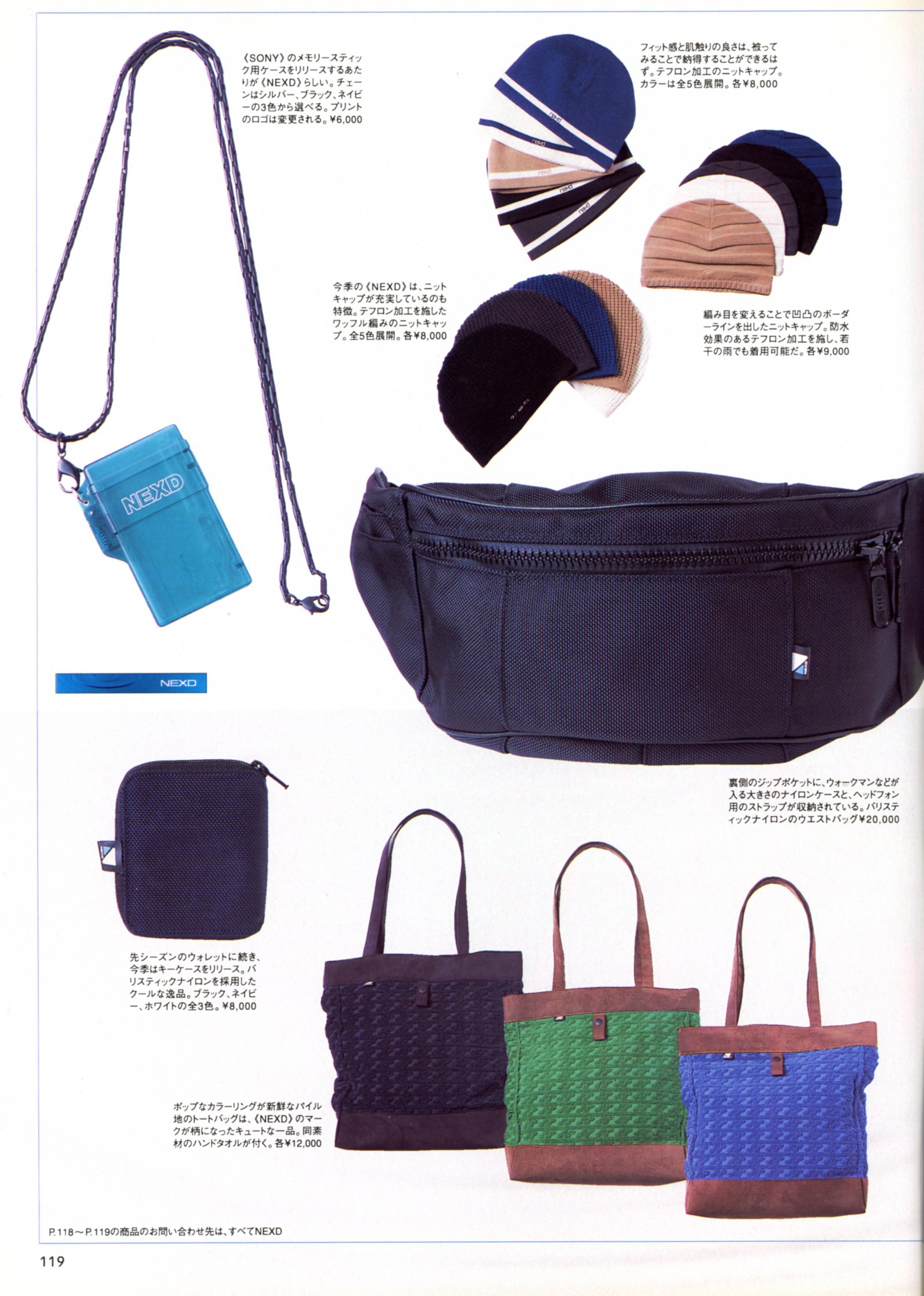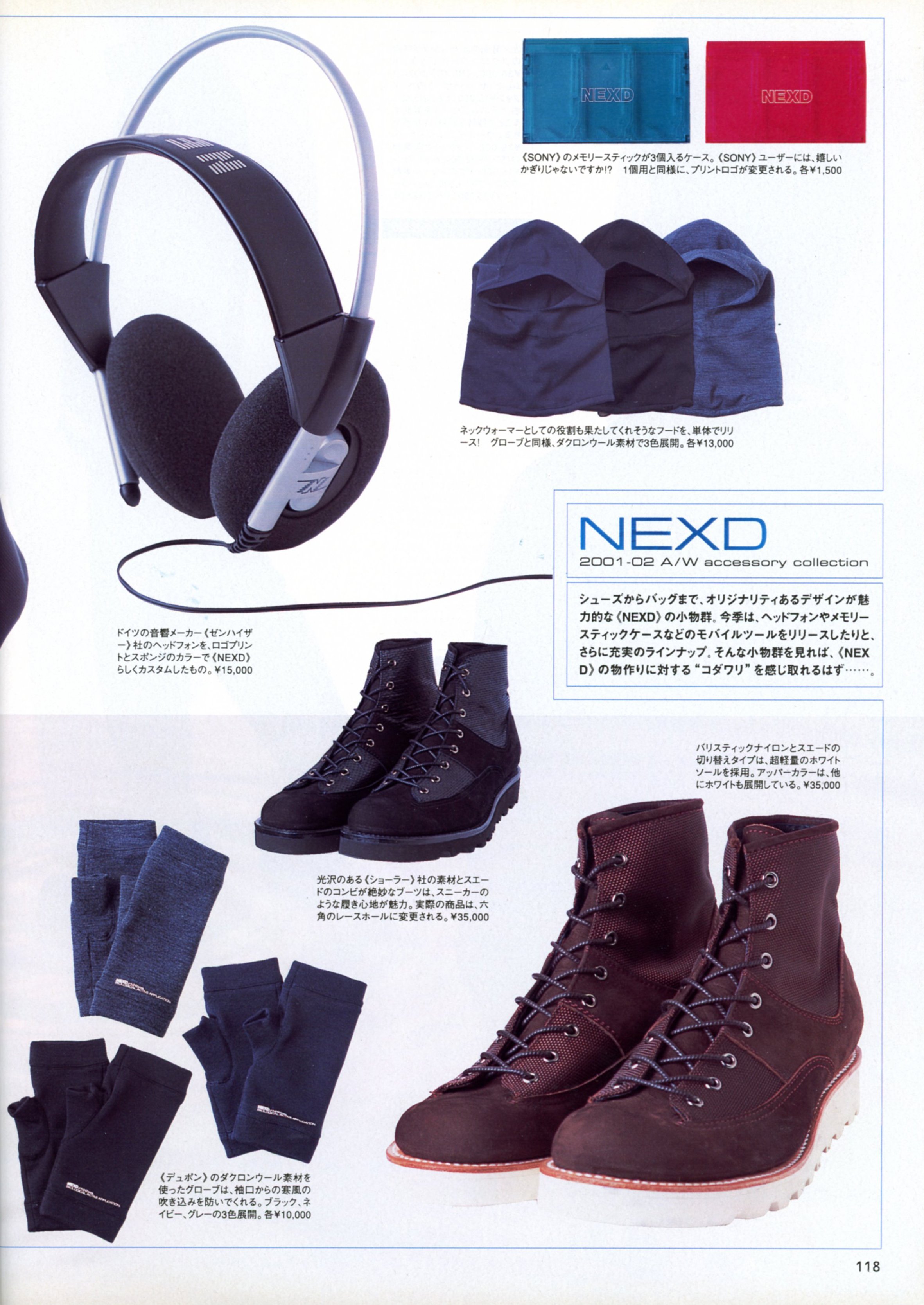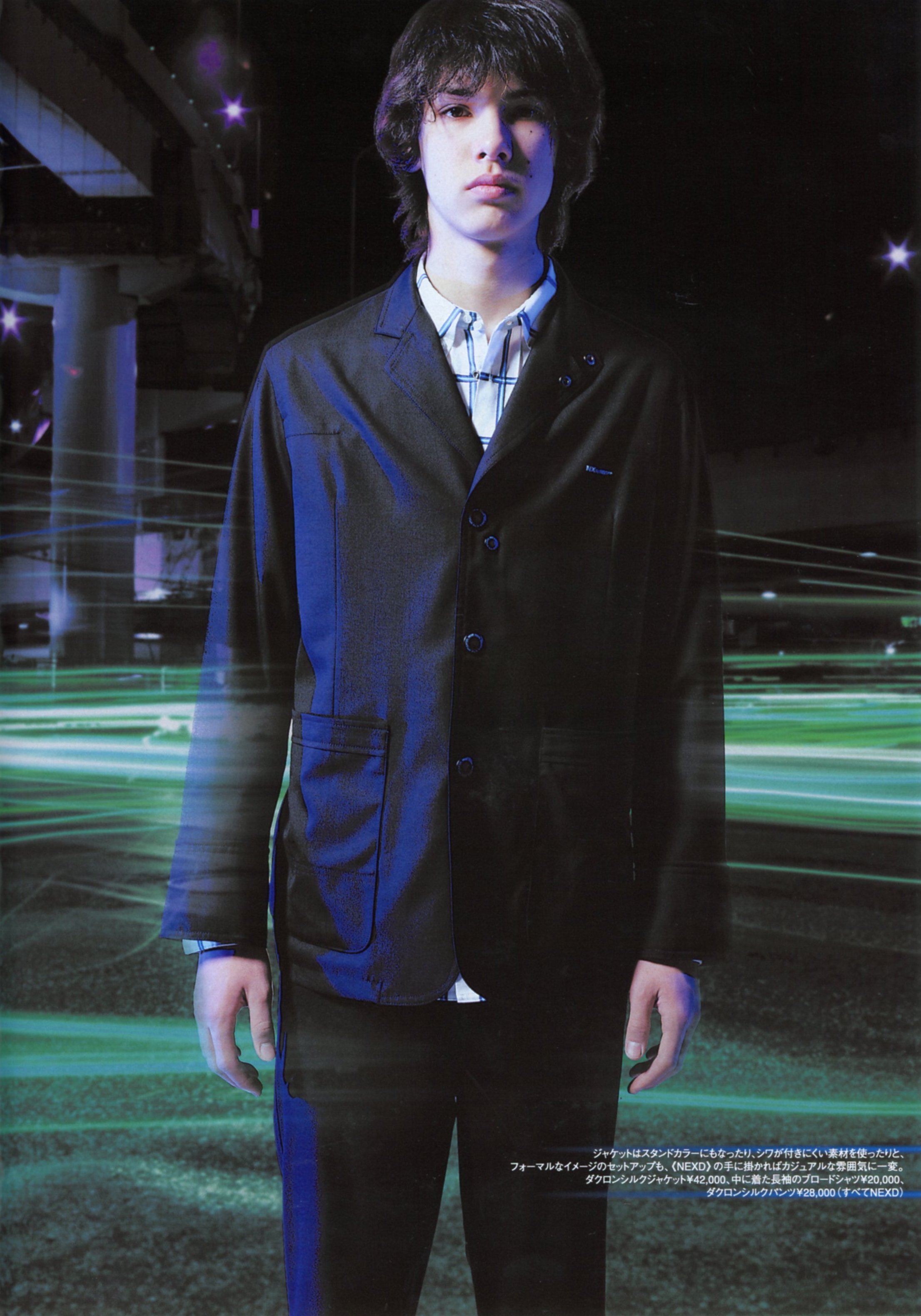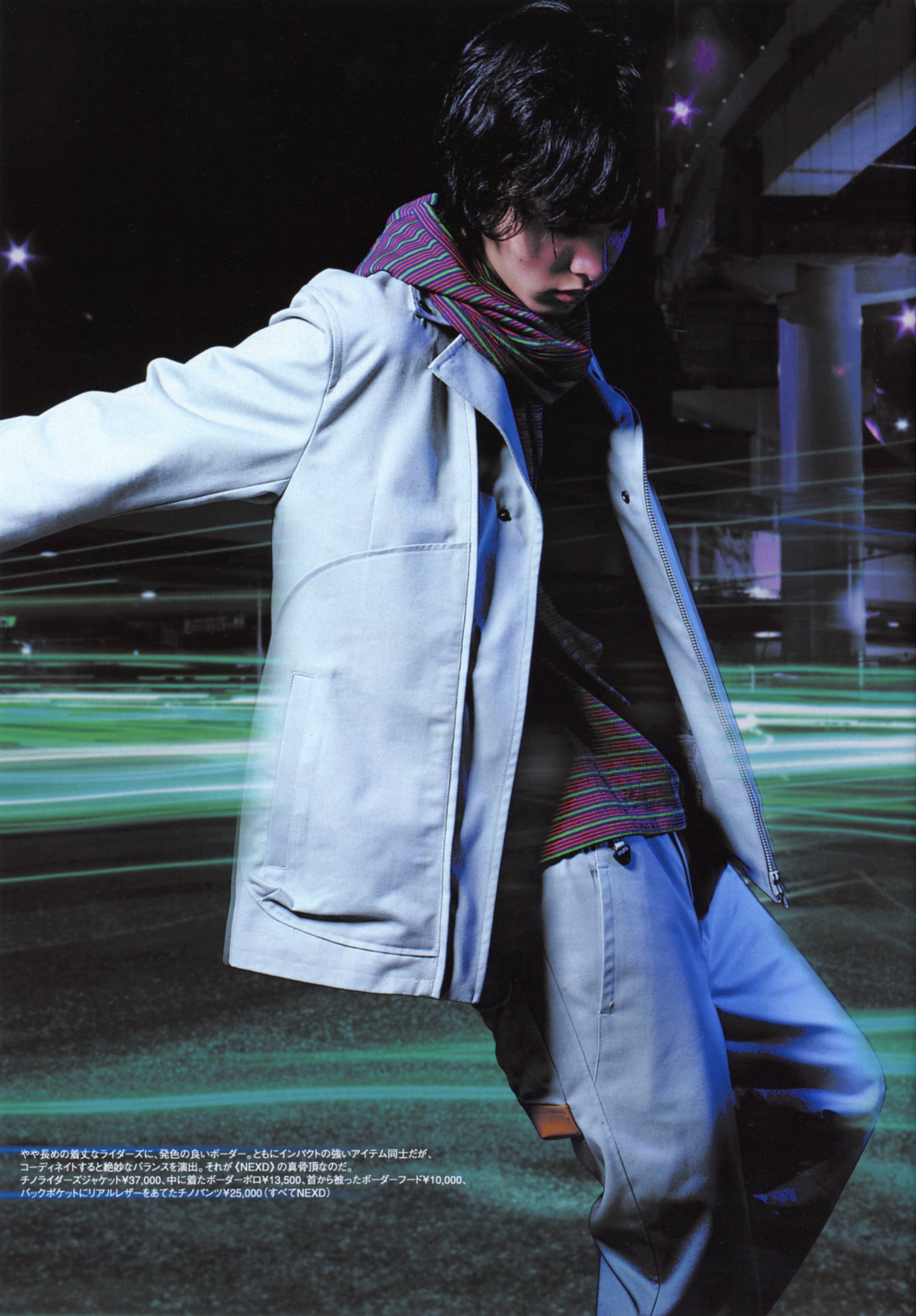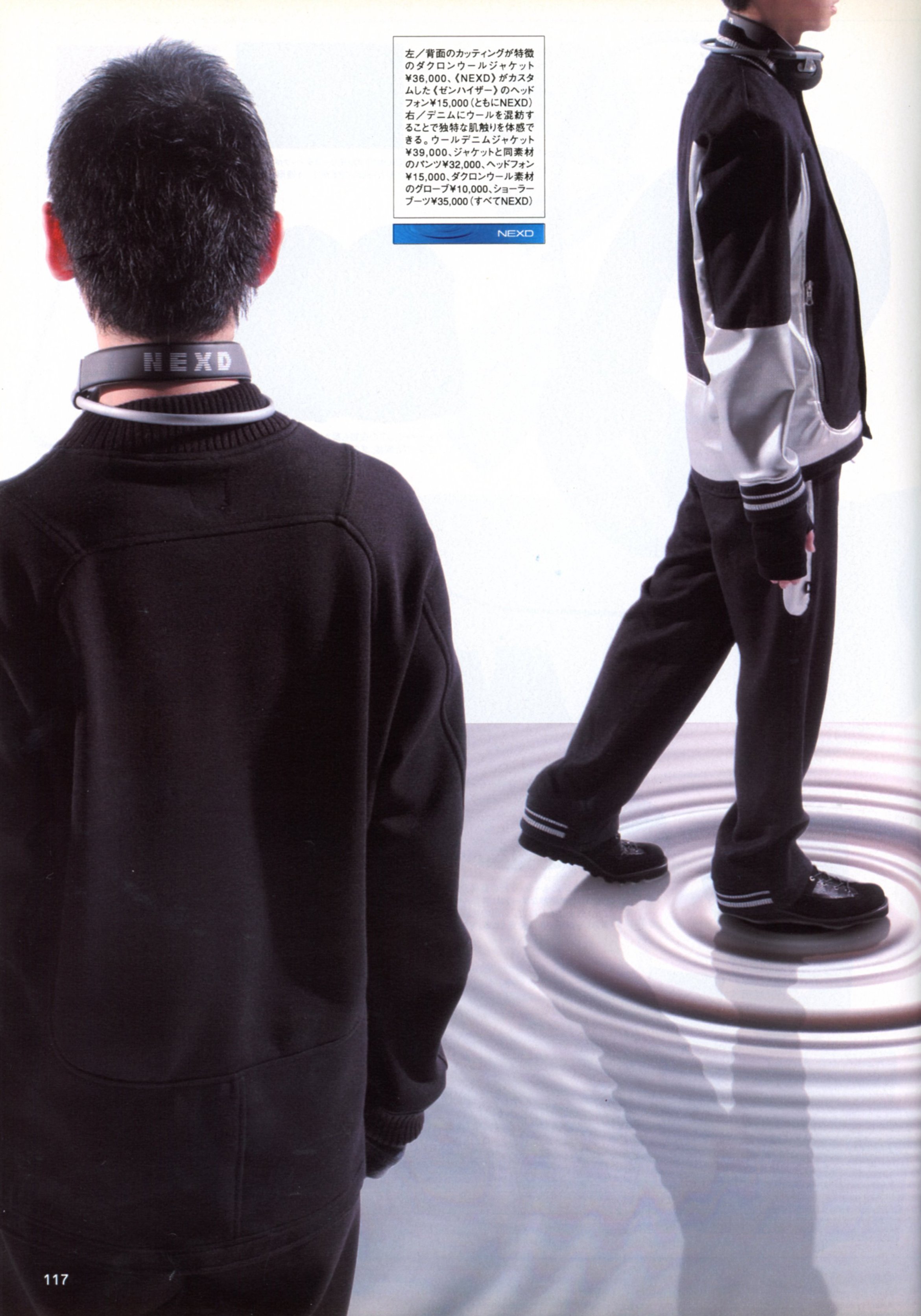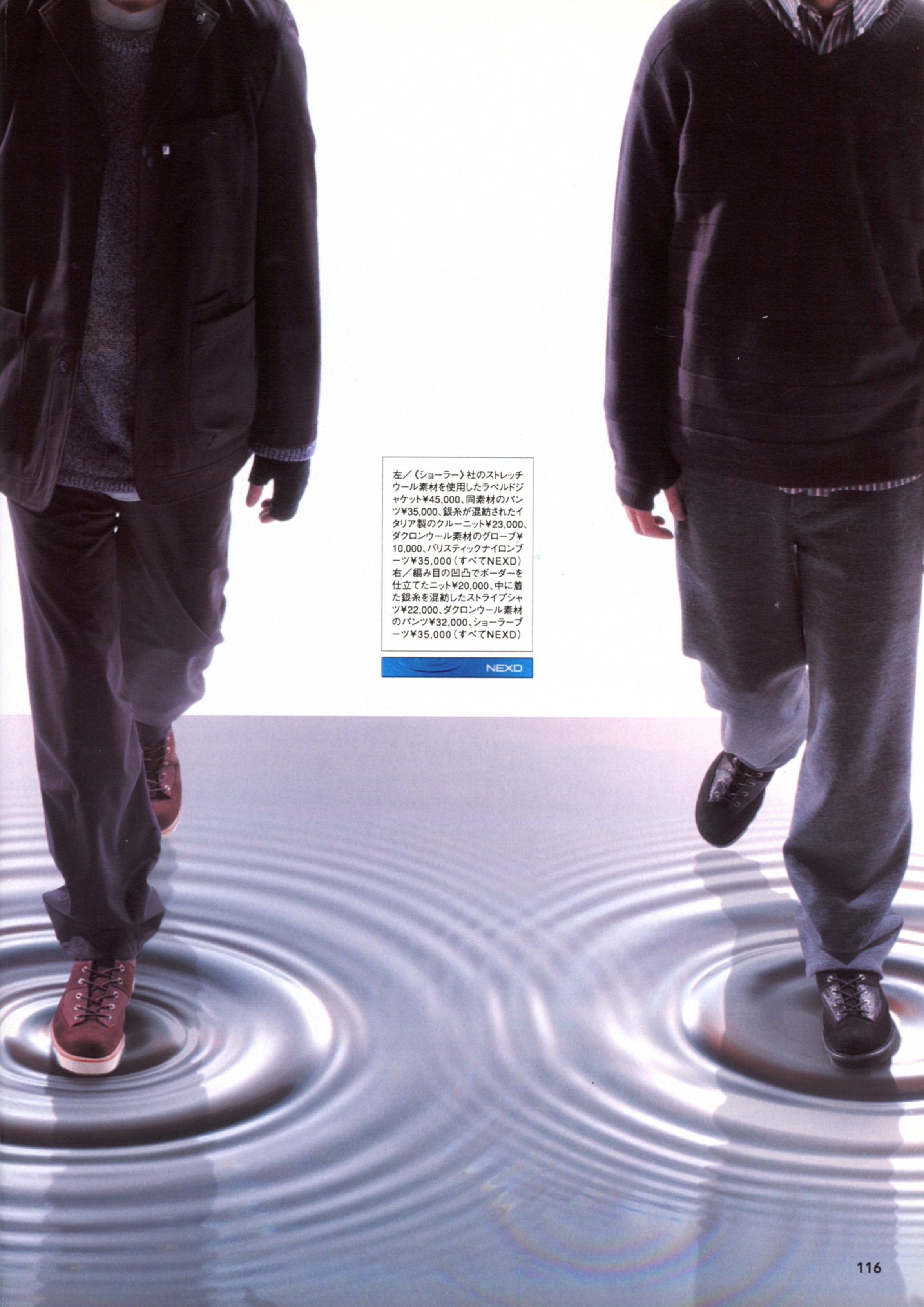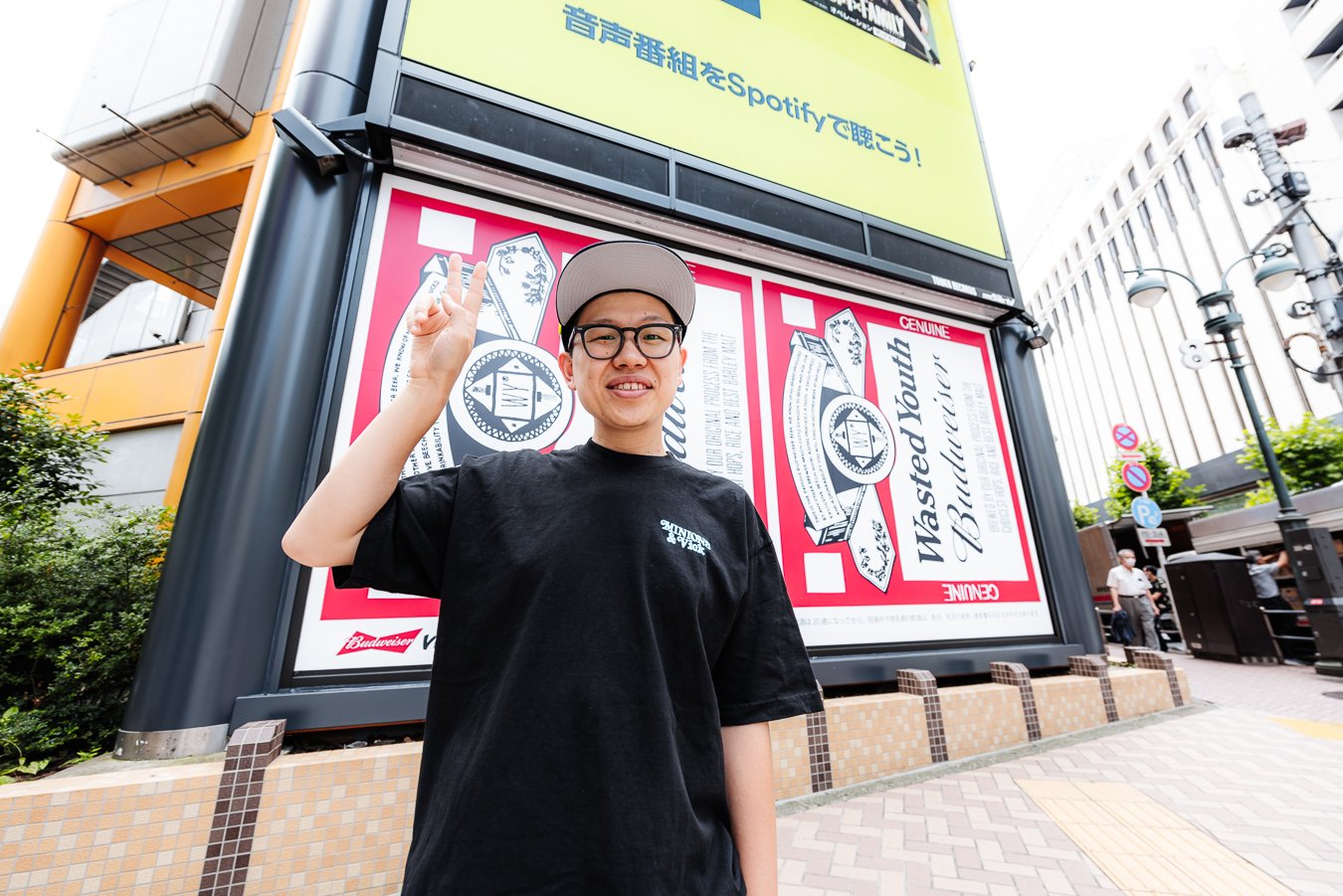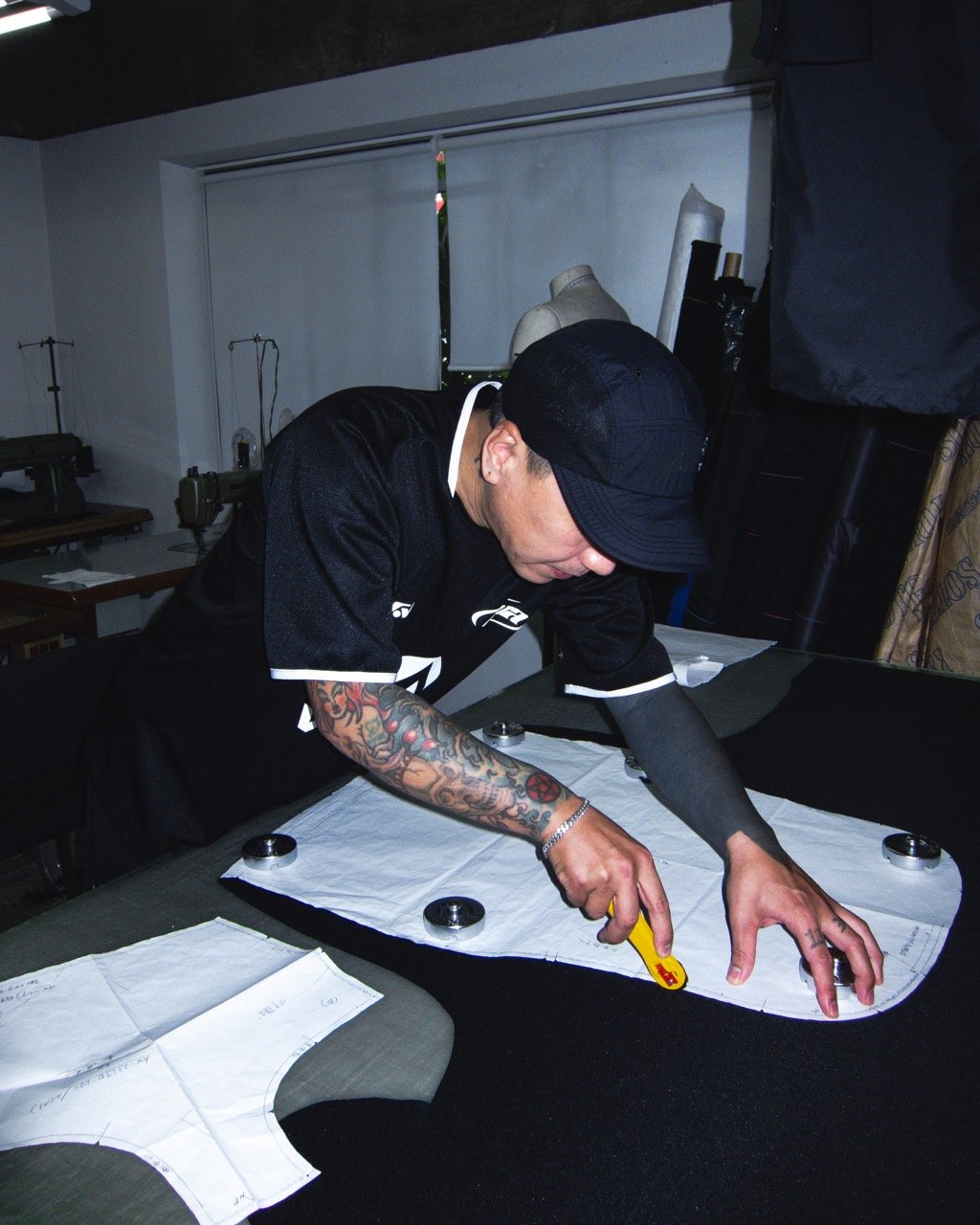LIGHT YEARS AHEAD - MEET THE URA-HARA Y2K BOSS, KIMIHISA SENJU

By now, most of us are familiar with the influential Ura-Hara era that showed the world how Japan’s take on fashion is unlike any other country. Search any second-hand clothing store or website even outside of Japan, and you’ll come across plenty of brands that were birthed during the golden days of Harajuku, from BAPE, UNDERCOVER, WTAPS, GOODENOUGH, and more.
ファッション、ストリート好きの人で90年代、00年代の原宿の影響力を知らない人はいない。直接裏原に影響されたと公言しているバージル・アブローやキム・ジョーンズらの影響もあり、今や日本国内のみでなく、海外でもこの時代のファンは多い。BAPE、UNDERCOVER、WTAPS、GOODENOUGHなどは海外のどのサイトを見ても出てくるだろう。
While a handful of brands have seen global success even after the Ura-Hara period was said to have ended, the majority of the brands are either discontinued or never truly made it overseas. In fact, one of the sole reasons why the Ura-Hara era came to an end was due to some of the bigger brands becoming too big, with some brands expanding globally and others hosting runway shows in Paris. But there is so much information out there, so many gems from the time that have yet to be discovered by people who didn’t experience the 90s and 00s live.
世界的に注目を浴びている「裏原」だが、海外でも知られている当時のブランドはうち僅かだ。裏原の時代が「終わった」と言われている理由の一つはいくつかの代表ブランドの急成長、世界進出とも言われている。だが掘れば掘るほど当時を経験していない人でも情報は出てくる。
Yes, we know Hiroshi Fujiwara, yes we know Jun Takahashi, and yes we know NIGO [pun-intended]. If you’re a real fan of Ura-Hara, you’ll know many more names that were making moves in the streets. One of these names is designer and store owner Kimihisa Senju, who played a major role in shaping the street scene of Japan, and continues to be a key figure today.
知識があまりなくても藤原ヒロシ、高橋盾[Jonio]、NIGOなどは今や誰しもが知っている名前だ。当時を経験した人やコアなファンはおそらくもっと知っているはず。千壽公久という名前を聞いたことある人も少なくないはず。当時の原宿の重要人物の一人だ。
Senju has been the designer of many brands, starting with Swipe On The Quiet, often known simply as SOTQ. With Senju liking functionality in his clothing, which didn’t exist in nearly as many brands as today, SOTQ is a fusion of the past and future. The designs are still just as cutting edge as they were back then, with items like this Town Traveler Jacket with an integrated backpack, a watch window, a drink holder, and other highly useful details. His next brand NEXD also follows the same path, with unique functions that you won’t see in any other brand. Senju’s unique style at one point even created a sub-group of Harajuku fashion heads called “Senju-kei”, meaning “Senju Type People”.
千壽さんはSwipe On The Quiet[SOTQ]を含む多くのブランドのデザイナーとして知られている。グラフィックやいわゆる「ストリート」要素が多かった当時、SOTQはクラシックなシルエットながらも多機能的な服を提案し、過去と未来を融合するようなブランドだった。バックパック、時計用のカバー、ドリンクホルダーなどの機能を備えた写真のTown Traveler Jacketはその一例。彼の次のブランド、NEXDもとても機能的な服が多いブランドだ。そのユニークで唯一無二なスタイルは原宿で「千壽系」というジャンルを生むほどファンが多かった。
While he has also had and been a part of many other brands, his talents were not only there as a designer, but as a store owner as well. MOTORWN was one of Harajuku’s best select clothing stores of the time, where he was the leader. Stocking his own brands as well as countless other important names of the time, MOTORWN was one of the go-to shops for people deep in the Tokyo street scene.
数多くのブランドに関わってきた千壽さんだが、彼はデザイナーとして優れているだけではなかった。当時の原宿の人気ショップ、MOTORWNも彼が率いたプロジェクトの一つ。自らのブランドはもちろん、当時の人気ブランド多数がセレクトされた豊富なラインナップは東京のストリートファンからすると伝説ショップ。
What makes Senju’s story even more special is that he isn’t only somebody who shined in the past, but one who continues to influence the scene today. Upper Field One, also known as UFO, is Senju’s current brand & store, which is a breath of fresh air in today’s over-commercialized fashion world. Almost completely ignoring fashion logic, the store is only open on Fridays from 15:00-20:00. Even with such narrow hours, UFO creates lines every week, with most items selling out. The key to success with UFO is Senju’s eye which is always looking 3 steps ahead of the fashion scene, as well as maintaining the perfect balance of all aspects a store needs.
その千壽さんは90年代、00年代に活躍しただけでなく、今も現役でストリートシーンで活動をしている。上原にあるUpper Field One[UFO]が彼の現在の戦場。どんどんコマーシャライズされていくファッションシーンとは対象的なショップとなっている。金曜日の15:00-20:00、週にこの5時間しか空いていないUFO。ビジネス目線からしたらあり得ないとも言えるこの営業時間の中、Upper Field Oneの前には毎週のように行列ができ、多くのアイテムがすぐにソールドアウト。
We had the incredible opportunity to sit down with Kimihisa, and take a trip from the past to now, and talk about the future. From his relations to Hiroshi Fujiwara to his design identity for his brands, what he was doing for the 9 years away from fashion to what he is doing now, check out our exclusive interview with him below.
sabukaruは今回千壽さんとお会いし、過去から現在、そして未来、全てについて話を聞くことができた。藤原ヒロシとの関係性、それぞれのブランドについて、ファッションから一線を引いていた9年間、現在の活動など、さまざまなトピックを以下のインタビューで是非チェックだ。
Can you please introduce yourself to the Sabukaru network? 初めに自己紹介をお願いしてもよろしいですか?
I'm Kimihisa Senju, and I started selling clothes during the Urahara era. I first got my start as a salesperson at “EM”, ran by a friend Sakayori, made my way up to a buyer, and decided to go independent and started my own brand. I got recruited in 1993, and we only really sold clothes like GOODENOUGH at the store, but I learned from the best and gradually got the hang of the business.
I started my first brand, SWIPE ON THE QUIET, with Hirofumi Kiyonaga, but we parted ways, and the next thing you know, he was launching his own brand SOPH CO., LTD. That's sort of the short version of how I ended up where I am today.
千壽公久といいます。裏原の時代に洋服の販売を始めて、最初は酒寄君の EM という会社で販売員としてスタートしまして、そこからバイイングとかに行って、独立して自分のブランドを始めたました。引っ張ってきてもらって会社に入ったのが1993年ぐらいからで、そのときは GOODENOUGH とかを扱ってたんですけど、そこから勉強をしながら服作りに近づいていったんです。
最初に SWIPE ON THE QUIET っていうのを始めたんですけど、実は SOPH. CO., LTD.の清永浩文君と一緒に始めたんです。それから僕が一人でやるようになって彼が SOPH CO., LTD. をやるようになってった感じで今に至るというか《笑》。
Can you tell us about where you grew up and how you first discovered streetwear?
時系列順にお話をさせていただきたいのですが、まず千壽さんの幼少期についてお聞きしてもいいですか?
I was born and raised in the Bunkyo-ward of Tokyo, and I've been into skating for as long as I can remember. Around high school, I got into the world of streetwear. Back then, skate attire was considered childish, so skaters like myself weren't necessarily the best dressed in town. It was a running joke on who among us could actually get into a club dressed in skate clothes head to toe, but skating was not as major as it is today, so it was pretty tough.
My friends and I skated and partied around the city all night long in skating attire and thrifted clothes. We were having the time of our lives, but I suppose word got around the city, and Hiroshi approached us. So really, I have skateboarding to thank for being able to make clothes for a living.
東京の文京区で生まれ育ったんですけど、最初はスケートボードをやっていて。そこからストリートウェアに興味を持つようになったんですけど、昔はスケートボードの服って子供っぽい服っていうイメージがあって、如何にそういった服でクラブに入れるかみたいなのがあったんです《笑》。やっぱりスケートボード・カルチャーもまだマイナーだったので、そういったところは全然ダメだったんですけどね。
スケートボードの服とか昔の古着を着ながらスケートボードだったり夜遊びをしてたら、 GOODENOUGH を作ってる人に話をかけられたんです。だから全てはスケートボードをやってたおかげでこの業界に入れたというか。
Japanese streetwear has been around for a long time now, but at which point did you start taking interest? Was Hiroshi Fujiwara a big name in the scene already?
ストリート・ファッションの長い歴史を辿ってみると、千壽さんが藤原ヒロシさんに声をかけられた時点のストリートシーンってどんな感じでしたか?
The streetwear scene was definitely not as big as it is today.
まだ全然大きくなかったですね。
How do you remember the scene from back then compared to now?
当時のストリート・コミュニティを今と比べるとどんな感じでした?
It was very small, actually. Stussy had just started to transition from making surf wear to skate wear, and Calvin Klein was still considered street fashion. There weren't a lot of brands we could choose from. Skate brands were sort of the only place we got our clothes from, and it was right around when British brands like insane and ANARCHIC ADJUSTMENT started to gain steam. It was still a small market, but there were plenty of die-hard fans.
全然小さかったですね。丁度ステュ―シーがサーフ・ウェアからスケート・ウェアに移行しはじめたタイミングで、カルバン・クラインとかもストリートって感じがあって。そんなに今みたいに多くのブランドがなかった時代でした。基本的にスケート・ブランドからスタイルをピックアップしてコーデを組むみたいな。当時はイギリスの insane だったりアナ―キック・アジャスメントっていう最近のスケート・ブランドの礎にあたるようなブランドがチョコチョコ出てきてて。マーケットとしては小さかったんですけど、凄く熱狂的なファンが多かったように思いますね。
‘ELT’ is another store you worked for that not many people may know about outside of Japan. How was it like working for such a legendary establishment?
EM の後に ELT で働かれてると思うのですが、ELTのようなストリートシーンの中でもレジェンド的ショップで働くのはどんな感じでしたか?
Even before that, there used to be this store called LONDIS, but I was just a customer back then. It was located in the back of Shibuya, and it was a very small store, but the Urahara really started from there.
その前にロンディスっていうところがあったんですけど、そこにはお客さんとして遊びに行ったりしてて。渋谷の裏にある凄く小さいショップだったんですけど、そこから裏原に繋がっていったというか。
How was it like working With Hiroshi Fujiwara? YOPPI [sabukaru interview] mentioned how great he was bringing the community together.
YOPPI さんも藤原ヒロシさんにはコミュニティを繋げる力があったと言っていました。藤原ヒロシさんと一緒に働くのはどのようなものでしたか?
Hiroshi was a man of few words, and he never told us exactly what to do. He would leave doors open for us to explore.
当時のヒロシ君はディレクションをしてて多くを語らないような感じで「こうしたほうが良いよ」みたいなことは言わなかった。引き出しを開けといてくれたみたいな。
HIROSHI FUJIWARA in an old magazine
What did you do at the first two shops you worked for?
EM と ELT ではどういったことを?
I was a salesperson and a buyer at EM. I often went on trips with the CEO to buy stuff. I’d have friends that worked at skate shops, so I asked them to keep some of their products for us to sell at EM. After a while, I was asked to design clothes for EM, since I had some experience when I was working for ELT. EM was such a small store, everyone was sort of doing everything, so it wasn’t so much of a big deal, to be honest.
EM では販売とバイイング。そのときの社長に付き添ってましたね。スケート・ショップに友達がいたりしたんですけど、そこの商品をあらかじめ取り置きしてもらったりっていううことをしてました。それから「モノ造りをしてみないか」みたいなことを言われたんですけど、ELT のときも販売をしながら洋服を作っていて。そんな大きい会社でもなかったのでみんなやりたいことをやっていたというか。
What were some of the first clothes you worked on?
初めて作りはじめたのは SWIPE ON THE QUIET のアイテムですか?
Actually, it would have to be original items for ELT.
いや、ELT のオリジナルとかが最初になりますね。
You mentioned how skating attire was still seen as childish, but did the owners of ELT have second thoughts about going all-in with skate ware?
先程仰っていたように、スケート服がまだ子供っぽい印象があった時代の中、ELT はスケート服を作っていこうと思った理由などはあるのですか?
Actually, ELT was not necessarily a skate brand, but rather became one because skaters chose to wear our clothes.
そうですね。スケート・ブランドというかその垣根がなくなりつつあった時代なので、いわゆるスケーターが着ていたらスケート・ブランドになっちゃうような。
How did you come up with the name SWIPE ON THE QUIET?
SWIPE ON THE QUIET の名前の由来についてお聞かせください。
Kiyonaga first came up with naming our brand SWIPE, and I took the word QUIET from the band Quiet Riot, suggesting we add it onto the name. Actually, Kiyonaga was adamant that we come up with a brand name that started with an “S” since he used to work for Supreme. I’m not certain but it couldn’t be a coincidence that he decided to name his project SOPH CO., LTD. right?
SWIPE っていう名前は実は清永君が付けてて、QUIET っていうのは Quiet Riot から来てるんですね。元々清永君は Supreme で働いていたので「とにかく “S” から始まるブランド名にしたい」って言ってて、後の SOPH CO., LTD. もそういったところから影響があるんだと思う。
SENJU with SOPH. director KIYONAGA
With the rise of the Y2K aesthetic, your design language seems to fit perfectly with today’s fashion sensibilities. Can you tell us about the inspiration behind your designs back then?
当時の雑誌などを見ても SWIPE ON THE QUIET のデザインのユニークさだったり、ギミックの面白さは群を抜いて印象的です。千壽さんの服作りに当たるインスピレーションなどについてお聞かせください。
Back then, I wanted to create clothes that neither high fashion nor streetwear designers were making, and I had this thing for gimmicks. Whether it be unique sewing techniques hardly anyone was using or bags that transformed, I got nerdy with how I designed my clothes. It was also important that the clothes I made were wearable enough for daily use yet aesthetically unique in that you'd know it's by none other than myself.
まずギミックを重視していたというか、当時はハイ・ブランドだったりスケート・ブランドにないところを狙ってたんですけど、個人的にもギミックがあるものが大好きでして。あまり見ない服のカッティングだったり、バッグがトランスフォームしたり、いわゆるオタクの目線でものを作っていましたね。あとは日常でも着れるけどどこから見ても自分のとこの服ってわかるようなモノ造りを根底においてましたね。
How was it like running a brand in the height of Urahara?
様々なブランドが意気揚々してた裏原の最盛期にブランドを運営するのはどのような経験でしたか?
It never felt like we were competing against each other but rather prospering as a community. Money didn't get in the way of collaborating with my peers if it meant that we were able to make something cool, but I suppose that's because we were all friends before business partners. In all honesty, we never intended to create such a commotion because all we actually wanted to do was make clothes we wanted to wear. Although we appreciated the support we got from each of our customers, their opinions on what we made didn't matter as much as our friends saying it's dope.
競争というよりかは協力していた感じがあって、「一緒になにかやろうよ」っていう誘いに対してもお金関係なしに面白いデザインに拘ったモノ造りだとか、やっぱりビジネスをやる前からみんな仲間だったので。本当のことを言うと、みんなで盛り上げようという気持ちすらなくて、単純に自分たちが着たいものを作っていた感じがあって。お客さんに評価してもらってたのではなく、仲間に「これいいね」って言われるのが最高に嬉しかったんですけど、それでお客さんも付いてきたって感じがありましたね。
SWIPE ON THE QUIET seems to have become a favorite among different digital mood boards and influencers today. How do you feel about your brand fitting the “now” so well?
SWIPE ON THE QUIET のサイズ感からデザイン性まで 「今」 にドンピシャな気がします。これについてどう思われていますか?
I’m flattered that people still enjoy the clothes I made from way back, but I also remember how much factories I worked with hated making the functional stuff [laughs]. Back then, there were plenty of factories that were cooperative since I was also young and ambitious. But those factories have closed down, and prices have risen over the years, so it’s actually quite difficult making those clothes today.
そういう風に言ってくれるのは嬉しいんですけど、結構ギミックに拘ったモノを作っているので工場の人が嫌がってたのを覚えてます《笑》。昔は工場も沢山あって、当時20代だった僕に協力もしてくれたんですけど、今は工場がなかったりだとか、単価も高くなったりしているので、服を作ること自体が難しくなってますね。
What were some of your favorite memories running SWIPE ON THE QUIET?
SWIPE ON THE QUIET をやっていた頃の一番印象的なエピソードを教えてください。
I loved many things I made for SWIPE ON THE QUIET, but I have to say the billiard balls I made when I first opened the store was my favorite project. It was impossible to make without the help of other brands that were around me, but it was a dream to make something that wasn’t an article of clothing.
さっきのジャケットとかもそうなんですけど、お店を出したときにビリヤードの球を作って、大変ではあったけど色んなブランドに協力してもらって。結構たくさんあるんですけど、やっぱりお店を立ち上げたときに洋服じゃないものを作った記憶が強く残ってますね。
So there was a store for SWIPE ON THE QUIET?
SWIPE ON THE QUIET の実店舗もあったんですか?
It started with SWIPE ON THE QUIET, but I also helped with nonnative opening, as well. I got to know the people behind brands like nonnative and GRAND CANYON, and also exclusively sold their clothes in my second store MOTORWN early on.
SWIPE ON THE QUIET だけじゃないですけど、今の nonnative の立ち上げのときに関わったり。nonnative がブランドを始めたときにうちでだけ扱わせてもらったり、GRAND CANYON とかもそうで、MOTORWN っていうお店で扱ってたんですね。
Where was the store located?
MOTORWN はどこでやられていたんですか?
It was inside the FACE building in Harajuku, located diagonally across the Harajuku police station.
原宿の FACE ビルっていうところがあるんですけど、原宿の警察署の斜め前にあって。一応そこら辺から裏原宿って言われてましたね。
Urahara being such a legendary movement, its influence is still felt around the world. How does it feel being a part of it in its heyday?
日本を超えて世界に名を轟かせた裏原カルチャ―ですが、最盛期に中心的なブランドをやられていたことについてはどう思われていますか?
I actually used to not like the name Urahara. The word “Ura” meaning the back of something, I never really understood why it was named that way, but I don’t care so much nowadays. But to be honest, I feel like YOPPI and I were just very lucky to have been able to work with Hiroshi. We were at the right place at the right time, and I’m glad I never went to other establishments. It all started with skating and partying, and I’m grateful that it all connected to what I’m doing for a living now.
昔は裏原って言われることがあまり好きじゃなかったんですよ。「なんで裏なんだろう?」っていう気持ちがあって。今はひとつのワードとして成り立っているのでいいんですけど。でも僕も YOPPI もヒロシ君のところに一緒にいれたっていうのは言っちゃえばラッキーだったと思うんです。その時代に色んなものを見させてもらったり、経験させてもらったりしたおかげで今があると思うし、他のアパレル・ブランドに行かなくて良かったなというか《笑》。元々スケートボードが好きでクラブで遊んだりしてたので、その先にあったお仕事がこういった関係のもので良かったなと思ってます。
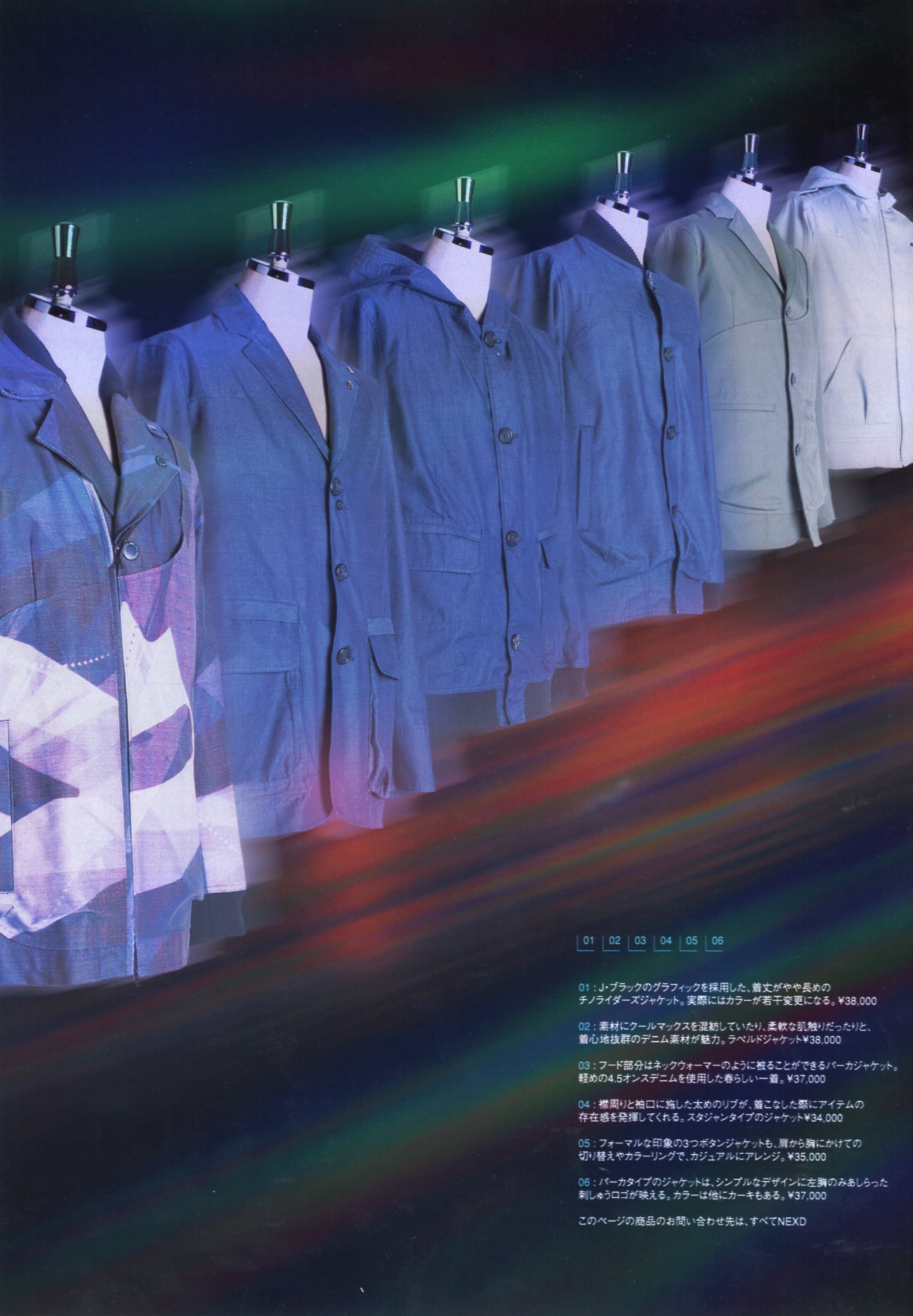
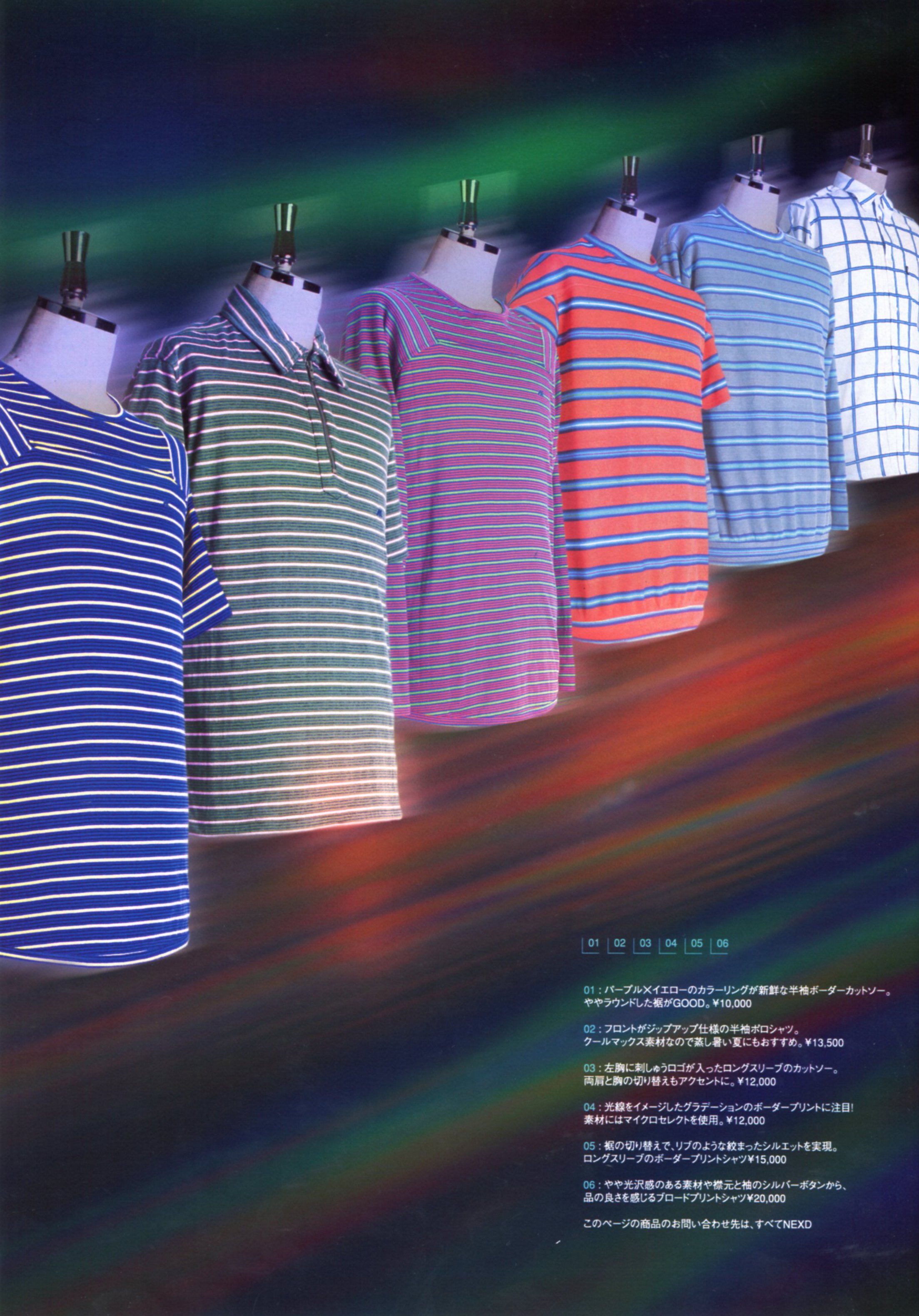
We're also big fans of your brand NEXD. How did you come up with the crazy graphics, and what was the story behind the project?
SWIPE ON THE QUIET の次のブランド、 NEXD をはじめたキッカケなどはあったのですか?
Some of the kids working at SWIPE ON THE QUIET started to want to design the clothes, and I also wanted to make clothes that were different, so that's how NEXD came to be. I was trying to make something very different from the clothes at SWIPE ON THE QUIET, but I couldn't stop adding gimmicks to them, so it ended up looking and feeling the same [laughs]. That's sort of why I decided to go all-in with the gimmicks and made NEXD all about high-tech/utilitarian clothing.
うちで働いていた子たちが 「SWIPE ON THE QUIET で自分たちのデザインをしたい」って言い出して、それでちょっと違うジャンルの服を作ろうかなと思ってやりだしたのが NEXD です。でも作っていくとやっぱりギミックを継ぎ足したりして、同じようなものができちゃったりしたんですけどね《笑》。だから基本的に NEXD で作る洋服もハイテクで機能的なものになっていきました。
What are some of the musical/cultural inspirations in designing clothes for your respective brands?
SWIPE ON THE QUIET や NEXD の洋服をデザインするにあたって受けたインスピレーションはどういったところから拾っていたのですか?
Music was a big influence, and I listened to a lot of different genres, but hip-hop and house music were definitely on top of the list. I wanted to make clothes that stood out in each situation and every location.
It could start with going out to a club, thinking about how someone could stand out on the packed dance floor, or it could be about how I could make clothes someone could wear after a skate session with friends. This issue, in particular, was something I really thought about since everyone seemed to go home to change clothes for going out. I personally thought it was weird how people wanted to look appropriate for the situation rather than standing out. This sort of paints how I approached designing clothes since most projects started with my opinion on what was going on in the culture at the time. Clothes are reflective of one's personality, so I suppose that's why I was sort of obsessed with gimmicks.
音楽なんかはその時々で変わっていったんですけど、やっぱりヒップホップから影響されることがあって、後は夜遊びに行くときはハウス・ミュージックを良く聴いたりしてて。個々のシチュエーション、場所で如何に目立つかみたいなところを追及してましたね。
「クラブに遊びに行ってこういう服を着れたら良いな」というところから洋服造りが始まるケースもありますし、とにかくスケートボードをした後に外で着れる服だったり。僕とかはあんまりしなかったんですけど、昔はやっぱり夜遊びに行くときに夜遊びの服に着替えたりしてた時代だったんですね。それが嫌で、そういったバックグラウンドが見えない服に違和感を感じてて、自分のそういったカルチャーに対する気持ちを根底にモノ造りをしてました。だからギミックなんかも必然的に増えていった感じですね。
We understand that Ebisu was also important with its plethora of clubs. What were some of the clubs you went to back then? What was the scene like back then compared to now?
原宿に加えて恵比寿のクラブシーンもカルチャーに欠かせなかったときいて聞いてます。千壽さんはどういったクラブに通ってましたか?今と比べて当時のクラブシーンはどういった感じでしたか?
There used to be this club called GOLD in Shibaura, Tokyo, and that’s definitely one that I went to a lot. MILK in Ebisu was also a great place, but GOLD remains to be my favorite.
Back then, the clubbing scene in Tokyo was flashier and more garish. Clubs these days cater to specific genres and appeal to particular groups of people, but clubs used to be bigger and more inclusive since one club played music from all the different genres. GOLD was about 4~5 stories tall, and each floor played different music, 3rd floor was mainly house, 2nd floor was mainly hip hop. It was the perfect place to meet new people.
URA-HARA PARTY FLYERS
芝浦に GOLD っていうクラブがあって、そこに良く行ってました。恵比寿だったら MILK に行ってたんですけど、やっぱり GOLD が一番多かったですね。
当時のクラブ・シーンはもっと派手で、色んな人がいました。今はクラブが細分化されてて、ジャンルごとに場所が決まっていると思うんですけど、昔のクラブは大箱だったせいか、色んな人が通ってましたね。GOLD なんかは 4~5階建てぐらいで、一番上は VIP 、3階はハウス、2階はヒップホップ、それから社交場みたいなところもあったから、同じクラブでも色んな人に出会えた。
What were some of the brands that you liked back then?
当時好きだったブランドを教えてください。
GOODENOUGH has got to be my favorite. I don’t have all the colors, but I’ve collected every product they’ve released. I’ve also released exclusive products straight from Hiroshi, so I wouldn’t be surprised if my collection was as extensive as some of the top collectors around the world.
ずっと GOODENOUGH は好きでしたね。全色じゃないですけど、全商品買っていて。ヒロシ君から売り物じゃないものを直接もらったりもしていたので、多分世界でもトップ10に入るぐらい GOODENOUGH のアイテムを持ってると思います。
SENJU in GOODENOUGH
What made GOODENOUGH so special to you?
GOODENOUGH のどういったところに惹かれますか?
I’m not quite sure, actually [laughs]. Of course, he had a very good team behind him that made his ideas into reality, but I think it comes down to his vision and perspective on things. A lot of his products at GOODENOUGH were seemingly ordinary yet extraordinary. None of them appeared edgy, but his unique perspective on clothes drastically changed how they appeared physically, and I'm still impressed by how he was able to do that back then.
なんですかね《笑》。とにかく当時のヒロシ君のモノ造りというか、ヒロシ君のアイデアが GOODENOUGH のチームによって具現化されてたんですけど、やっぱりありそうでないもの、普通なんだけど普通じゃないものが多かったんです。だから尖ってはいないんですけど、ちょっとした目線の変え方で見え方が変わる面白い服だったりアイテムばかりで、未だに凄いなと思っています。
There's a good amount of time between MOTORWN and RISEY. What were you doing between these projects?
MOTORWN の後に RISEY をやられたと思うんですが、10年近く間が空いています。この間の期間は何をされていたのですか?
I was back home in Oita prefecture since my family needed help with the family business. My father managed a hot spring inn, but he fell ill, so as the eldest son, I had to take over.
そのときは実家が大分で温泉宿をやっていたんですけど、そっちの手伝いをしてました。一応長男という立場にあったので、自分の父の体調が悪くなって、それで長い期間のブランクができてしまったというか。
There was even a tribe of your fans called “Senju-kei”. How do you feel about having such an influence over how people dress in Tokyo?
千壽さんのスタイルが好きな「千壽系」の人もいたと。これについてどう思いますか?
I’ve sort of heard about the existence of die-hard fans out there, and it’s flattering, but it’s embarrassing being asked that question [laughs].
僕もそう見たことはないんですけど、熱狂的なファンがいることは伺ってて、でもやっぱり恥ずかしい《笑》。
Reflecting on your time working at your onsen business, has this in any way affected you as a creative?
10年近く実家の温泉宿で働らかれていた期間、クリエイティブとしてなにか影響されたり、変わったりしますか?
To be honest, I wasn't happy about leaving the fashion industry in the beginning. But fortunately, I was still involved with design work throughout my time managing the hot spring inn. Namely, Goro of MIN-NANO, when he first started his store, it really reminded me of how LONDIS was back in the day. I think when I first met him, his store was mainly focused on bicycles. I think the reason why we became friends at first was because I went to his store and bought a ton of number plates for BMX bikes [laughs]. As someone who loved fashion, I was more than happy managing stores selling clothes, but seeing how Goro decided to manage his store, I was inspired to do something similar.
Although I was miles away from Tokyo managing the hot spring inn in Oita, I was in contact with all my friends back in the capital, so fashion was always in my mind. Having met Goro and seeing how well his store was doing, I realized that I didn't necessarily have to be in the capital to be in fashion. As you can tell, from SWIPE ON THE QUIET to MOTORWN, I was always sort of on the offense, fully immersed in the fast-paced culture of fashion, but Goro set an example of how that's not necessarily the only way to success.
MIN-NANO bottle in UPPER FIELD ONE
元々良かろうと思ってやってたわけでもなくて。Goro君がお店を始めたとき、最初の池ノ上のお店がロンディスの感じに凄く似てたんですよね。オープンしたての時は自転車メインで、知り合うきっかけがそこで僕がBMXのナンバープレートを爆買いしたのがきっかけだったと思います(笑)。それまでは自分も洋服が好きな人間だから洋服を買うほうだったんですけど、そのとき初めてまたやるんであれば、こういったお店をやりたいと思ったんですね。
温泉宿をやりながら東京にも友達がいっぱいいたので、ファッションに対する感覚はそう変わらなかったんですけど、Goro君のスタイルがとにかく刺激になったというか。今までは攻めに攻めてものを作ってたんですけど、原宿から離れてても、ゆったりと情報発信もできるんだなと思わされて。それで今に繋がっているというか。
How did you restart your journey in fashion? What were the first moves you took?
家業からファッションへ復活した際の最初のステップはなんでしたか?
I was actually in wholesale for two years before opening my new shop. I tried my hand at connecting with clients through exhibitions, but I quickly realized that it was not for me. It felt like I was designing clothes that my clients liked rather than clothes that I personally loved, so I decided to quit. Although, I felt bad for suddenly going out of business since I had built a good amount of relationships, so instead of completely shutting down, I decided to rename my business and start UFO.
Without having to worry about wholesale, I was able to put more focus on my designs. UFO is open for business only on Fridays, but amazingly, everything sold out on the same day. Things were great in the store and the web store.
UPPER FIELD ONE Store Interior
最初は自分のお店を持たずに卸とかを2年ぐらいやってたんだけど、展示会とかをやって卸先を見つけるっていうスタイルは僕には合わないなと思って。それから自分が好きな服というよりかは取引先が好む服を作っているのではないかという感覚になって、やめることになったんです。ただ急に取引をやめるのは取引先にも申し訳なく思えたので、名前を変えてここを始めることにしたんです。
UFOでは卸もしてなくて、毎週金曜日にお店を開けて、自分の好きなものを売っていくスタイルだから自分のモノ造りに丁度良くて。その日のうちに店舗とウェブのものが売れてしまってる感じですね。
The UFO store feels like a little bit of a secret. Can you please tell us more about the store? What’s the concept behind the brick-and-mortar location?
大通り沿いにあるにも関わらず、UFOにはちょっとした穴場感があります。UFO のコンセプトについてお聞かせください。
I'm sure it's quite confusing for first-timers [laughs]. We're open for business only on Fridays, and we have new products on sale each week. I remember having to go to specific stores to buy specific items back in the day, and UFO is sort of the recreation of that. We don't do wholesale, so you either come to our store or buy it through our web store.
I do everything from designing the products to dealing with the emails, but I love it since I feel fulfilled seeing the product from being in the concept stage until it reaches our customer's hands. The store itself ended up being very small because we had to fit the office in the same space, but since it's only me and my wife working here, it's not so much of a problem. I've always liked the feeling of being connected with my customers, and the intimacy of the store sort of helps with that. I sometimes put samples of upcoming products where our customers can barely see them, and the ones interested usually ask us about them. I value these small interactions.
外から見ると分かりづらいですよね《笑》。事務所とお店があるので小さいんですけど、金曜日に新しい商品をお客さんに売っているんです。大まかなコンセプトとしては作り手の僕とお客さんと対話しながらものを売っていく。僕が昔やっていたスタイルを今どうやったらできるかと考えた先にこういう形になったんですけど、今時ここでしか買えないものってあまりないじゃないですか。だけど、うちは卸もやってないので、お店で買うかウェブ・ショップで注文するかの二択で、メールの対応なんかも僕がやっていて。
自分がちゃんと作ったものがお客さんの手に渡るところまで見えていることにやりがいを感じてて。もちろん限界はありますけど、従業員はうちの妻だけなので、凄く上手くできてます。お客さんとの対話の機会を増やすために、新商品のサンプルがある日にはお客さんの目に直接見えないところに置いてみたりしてて。やっぱり興味のあるお客さんは聞いてくれるし、そういった接点は大事にしています。
So there's always something new on Fridays?
毎週金曜日に新商品をお店で見れることですか?
Yeah. Although I have to warn you, most of the products sell out within the day. We don't really make a lot of them to begin with, and we rarely ever restock them. We can make more, but since we don't do wholesale, about 150 t-shirts per design is sort of the sweet spot for us right now.
そうですね。ただ金曜日の内になくなっちゃうことが多いんですけどね。元々Tシャツなんかも一型150枚ぐらいしか作らないので、そんなに沢山あるわけでもなく、売り切れたら終わりみたいな。もっと作ってもいいんですけど、卸もやっていないので在庫を残さない量で、自分でできる範囲内でやっているんです。
Who are the people that come to the store? Is it mostly by word of mouth?
通常どういった客層が多いですか?
Most of them are in their 20s. Some of them know about me, but about 80% of our customers are 20~30 year olds that definitely don’t know who I am outside of being the store owner.
結構若くて、20代の子が多いですね。僕のことを知っているお客さんも中にはいるんですけど、8割ぐらい僕のことを知らない20~30代ぐらいの方々で。確実に僕のことを知らない人のほうが多いです《笑》。
You’ve managed to stay contemporary in each era you work in. What keeps your ideas so fresh?
裏原の最盛期から現在に至るまで、常に最先端の服を作り続けてきた印象を受けます。時代を超えたアイデアはどこから生まれるのですか?
It really comes down to how passionate I am about clothes, and it helps that I can see things from the consumer's perspective. I love what Goro and Jonio are coming out with, but as a designer myself, I can't help myself from thinking about how I would design them. I like the extra step of thinking about how I can best wear each article of clothing, and if something doesn't exist already, I immediately think about how I can make them myself.
It also helps that I have friends I can have interesting conversations with. Some of my products came out of talking to my friends, but I sometimes end up zoning out mid-conversation to make mental notes in these situations.
やっぱり基本的に僕も洋服が好きな人間なので、そういった目線でモノ造りができることに繋がるのかと思ってて。Goro君やジョ二オさんが作る服なんかは好きで、良いと思えるものも沢山あるものの、物欲っていうのか分からないですけど、どうしても「自分だったらこういう感じに作る」みたいな、同じものを着るのでもひと手間かけたい気持ちがあって、それで足りないものは自分で作ってしまえと思えちゃうんですね。
それから色んな面白い友達がいるので、話をして刺激を受けることも多くて。申し訳ないとは思っているんですけど、会話の途中で頭の中で良く考えちゃったりすることもあって。そういったことをしてきて今に至っている感じがありますね。
You seem to have a lot of toys in the store, as well. What makes toys special to you?
店内を見てみると、洋服以外にぬいぐるみも揃えられてますが、おもちゃ類は昔から集めているんですか?
Most of the plush toys here are from my personal collection, and they’re not for sale. I don’t know what it is, but having them around the store feels right.
ここのぬいぐるみは昔から持っているものがほとんどなんですけど、こういった感じのものが大好きで。決して売り物ではなくて、なんですかね、お店にあると落ち着くというか。
Reading some of the old magazines you were featured in, we found out that you were a big Gundam fan. Can you tell us a little bit about some of your favorite manga and anime?
当時の雑誌を振り返ってみたらオークションでガンプラを出品されているのをみました。《笑》ガンダムはもちろんのこと、他に好きな漫画やアニメはあったりしますか?
I’ve watched series like Evangelion, but Gundam comes on top. I just love the world they built, and I still love making plastic models when I have the time.
基本的にガンダムが好きで、エヴァンゲリオンなんかも見ましたけど、なんなんですかね、結局ガンダムの世界観が一番好きなんでしょうね。今でも時間があるとガンダムのプラモを作ったりしてるくらいですからね。
What's one UFO item people should get when they visit the store?
UFOでも定番にあたるアイテム、もしくはもっと多くの人に買ってもらいたいアイテムはありますか?
Right now, our pants are quite popular. They’re always sold out.
今はパンツが良いと思います。金曜日に販売してもすぐになくなっちゃうんで。
From UFO INSTAGRAM
How did you come up with the opening hours? Were you not scared to open shop from 15:00~20:00 for only one day of the week?
金曜にの15:00-20:00という短い営業時間でやられているということですが、お店ををやる側からしたらリスクも高いように。
We used to be open from Thursday to Sunday, but the pandemic forced us to rethink opening hours. But with online retail covering a substantial amount of our sales, it wasn't much trouble shortening the hours. So, I wanted all of our customers to visit us in one concentrated period, and we ended up only having to open shop from 15:00~20:00 for one day of the week. Outside of opening hours, I get to put more effort into designing products and spend quality time with family, so it's been great, actually.
元々は木曜日~日曜日にかけて営業をしてたんですけど、コロナ禍でお客さんの動向が変わって、やっぱりオンラインでの購入が多くなったんですね。それでお店をやっている人間からしてみれば、まばらに来られるよりはか一日に集中して来てほしいと思って、短くしきったらこういう営業時間になったんです。その分デザインのほうに時間をかけたり、家族と居る時間を増やしたりできたので、もう少し営業時間を長くしてもいいかなと思ってみたりもしますけど、今はこれで十分成り立っています。
We’re big fans of your graphic design work. Can you tell us a little bit about your process of coming up with your graphics?
SWIPE ON THE QUIET から UFO まで千壽さんのグラフィックデザインの大ファンです。デザインの思い付きから商品化までの過程についてお話をちょっとお聞きしてもいいですか?
I’ve always been responsible for the graphic designs of the products we’ve released. I remember when Adobe Illustrator cost a fortune to purchase, and we had to get a loan for it. Magazines were a great source of inspiration for me, and I used to hand sketch the logos I liked, and transferred it into digital files on the iMac. For the designs I couldn’t handle alone, I outsourced them to 7 STARS DESIGN. I knew a guy called Horiuchi in the studio, and he used to design all of the posters.
グラフィックデザインは当時から僕がやってて、昔から Adobe Illustrator を使っていたんですけど、当時は結構高かったたので、ローンを借りて購入した覚えがありますね。昔は “元ネタ” って呼んでたんですけど、当時のマガジンからインスピレーションを受けて、手書きからマックに入れ込むみたいなこともしてて。後は自分でやりきれないデザインなんかは知り合いの堀内君がやっていた 7 STARS DESIGN に頼んでポスターとかをやってもらったりしてました。
We were so amazed by your designs when we first encountered them reading the old magazines, but in your eyes, who are the other designers from the Urahara era that you think deserve a shoutout?
裏原世代のデザイナーの中でも千壽さんのグラフィック・デザインに特に魅力を感じたのですが、千壽さんご自身が凄いなと思う同世代のデザイナーはいたりしますか?
Jonio was always someone who I looked up to, but I also admired TRANSPORT’s Yohei Watanabe. He used to do such amazing work at TRANSPORT back then, and I remember their shop still sequence was right on top of SOPH CO., LTD.’s.
ジョ二オ君なんかとも一緒に遊んでくれてて凄いなと思ってたんですけど、同世代だったら TRANSPORT をやってた渡辺陽平君は凄いなと思ってましたね。今はちょっと違う感じになっちゃったけど、その当時の陽平君はスティル・シークエンスっていうショップを SOPH CO., LTD. の上でやってたんです。
It's interesting that you’ve been involved in so many different projects, but UFO surely doesn’t feel like the last thing you’re going to be doing.
ショップからブランド、温泉宿の経営まで、他分野で活躍してきた千壽さんですが、まだUFOが最後な気がしません。今後の予定、やりたいプロジェクトなどはありますか?
I’m sort of thinking about opening a campground. I love making outdoor clothes, and it would be nice to own a place where I can test them out. My friend and I are looking for a place close by.
なんか、キャンプ場をやりたいなと思ってて《笑》。今そのための場所も探しているんですけど、アウトドア系のものが好きで、自分で試せるような場所を友達と近場の山梨辺りでやりたいなと思ってて。
We are all big fans of food at sabukaru, and so we wanted to ask about some of your favorite places to eat around this area?
ほぼ全てのインタビューで聞いてる質問なのですが、千壽さんのお勧めの食事スポットを教えてください!
There’s this yakiniku place called “Yuji” just behind Shibuya, and I’m a regular there. The owner drives a Porsche, and a lot of fashion people like eating there. There’s also this place called “Umaimono Rakumi” in Shimokitazawa. It’s an izakaya, and their fish dishes are amazing.
渋谷の裏に「焼肉ゆうじ」っていうお店があるんですけど、そこはよく行きますね。そこのオーナーも面白くてカッコいいポルシェに乗ってたりするんですけど、アパレル関係の人が結構食べに行くお店でもあって。後は下北沢の「うまいもの楽味」って知ってます?地下にある居酒屋さんなんですけど、魚料理とかめちゃくちゃ美味い。
There are so many young kids that aspire to be in the creative industry these days, but what advice can you give to them?
若いクリエーターが日に日に増えている東京ですが、このニュー・ジェネレーションに向けて何か一言お願いします。
It’s important that you act. I never thought I would be in the fashion industry, but it ended up being one of the most enjoyable things I’ve done in my life. You never know until you try it. I also urge you to talk to people who've gained freedom in how they live. Listen to what they have to say, and use their wisdom as your guideline. If you fail, you can always restart. Don’t hesitate to ask questions.
とにかく行動したほうがいい。僕も元々アパレル関係のお仕事に就くとは思ってなかったんですけど、やってみたら楽しくて。やってみないと分からないことも沢山あるわけだから、とにかく行動してほしい。それから自由に生きている人たちの話を聞く。やっぱり経験している人たちの話を聞いて、自分も早く経験することが大事だと思います。いくら失敗してもやり直しはきくと思うので《笑》。後はお客さんなんかに「洋服作りたいんですけど」みたいなことを聞かれることもあって、そういったときは普通に教えたりするんですけど、聞けばキッカケができるので、恥ずかしがらずに前のめりに聞いてみるのも大事かと。
Thank you so much for your time today!
本日は忙しい中ありがとうございました!
Interview: Adrian Bianco & Casey Takumi Omori
Text: Casey Takumi Omori
Images: Natsuki Ludwig
Magazine scans from sabukaru Archive

